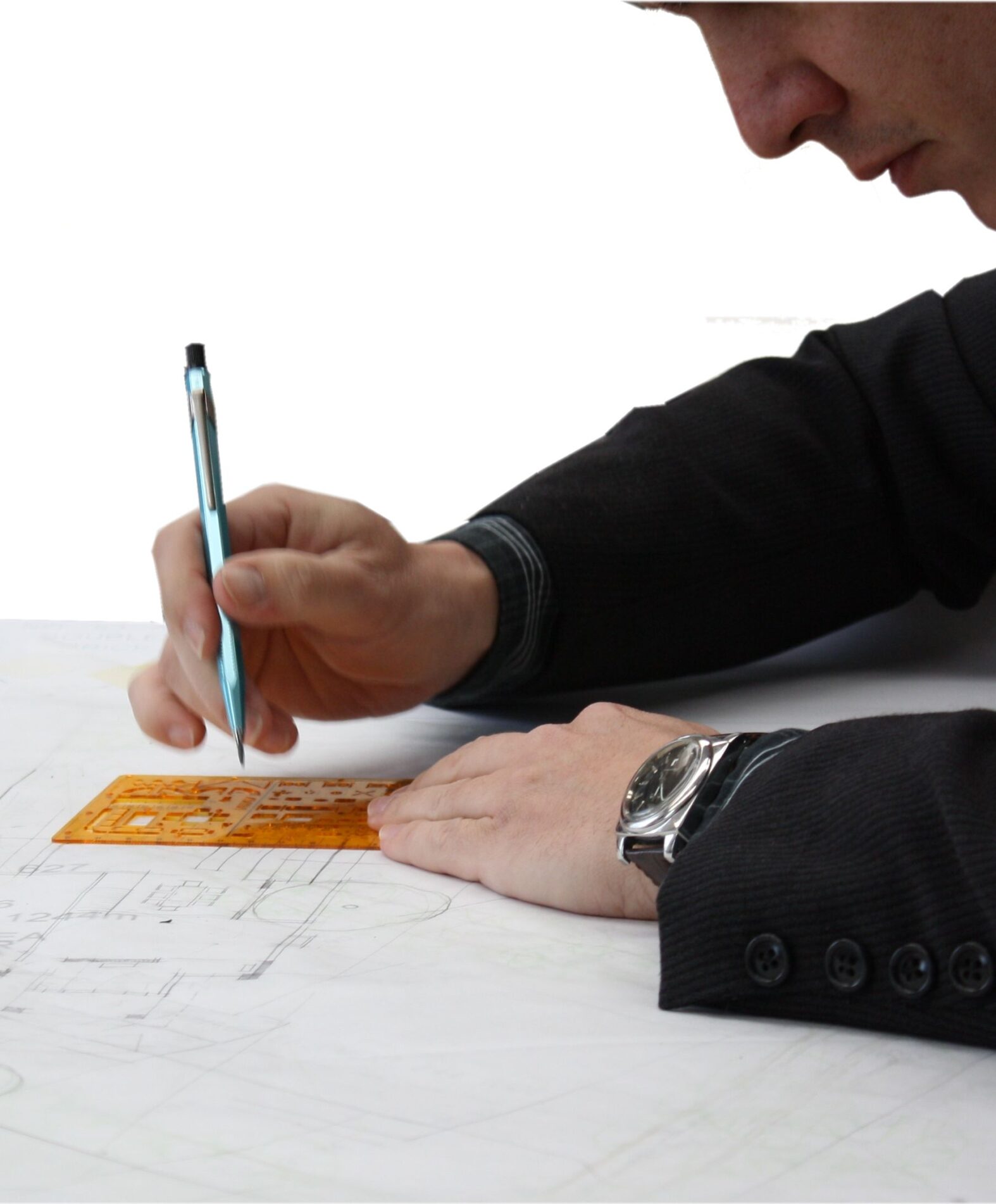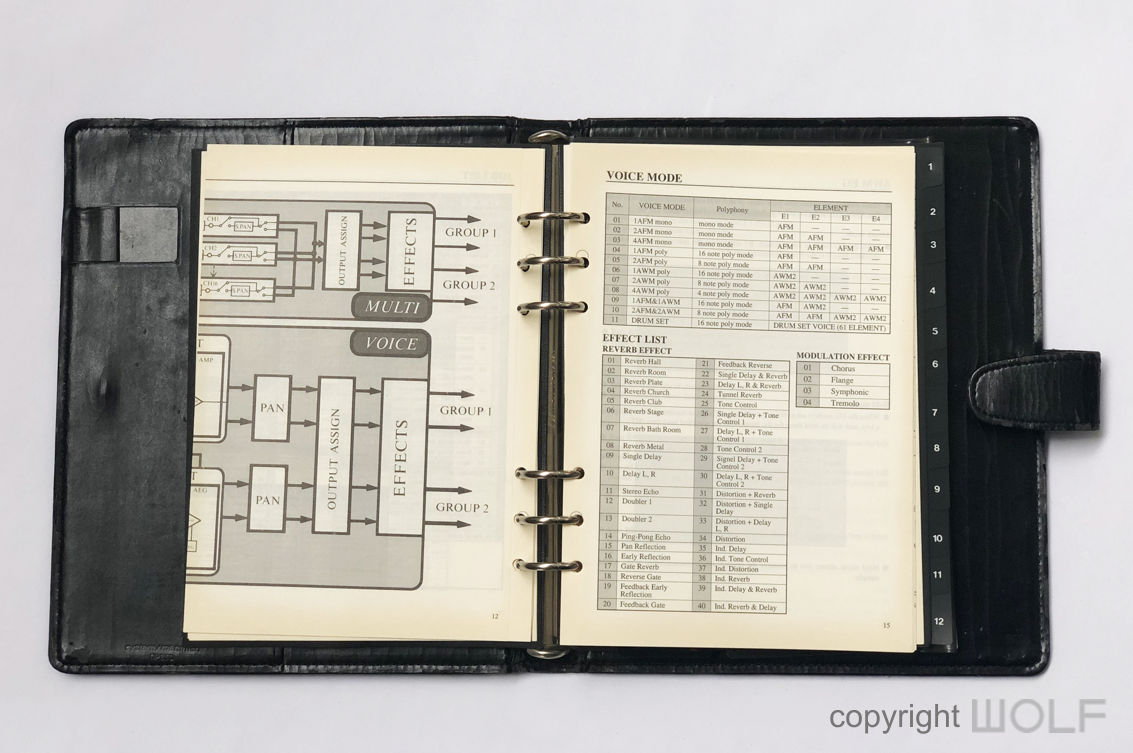WOLF retro DESIGN REVIEW. 6th January 2019
A retro review looks at products that are at least over ten years old from a present-day WOLF design perspective. While the technology and fashion of the period influence design, and are taken into consideration, great design ideas will transcend their eras to be timeless.
Interesting and factual information may be provided, but our review aims to deliver insight from the perspective of a designer’s mind and eyes.

The SY77 had tall orders to be a worthy successor to the legendary DX7 and DX7IIFD
INTRODUCTION
Product Focus
As with most reviews the focus is on the design and its evolution with the synthesizer. The functioning systems and sound quality are not necessarily considered.
Product description
Yamaha followed up its highly successful but aging DX line with the SY series. Launched in 1989, the SY77 was the new flagship synthesizer. Yamaha called it a “music synthesizer” because it had a built-in sequencer and effects processor. While this was not Yamaha’s first workstation (as the earlier YS-200 and V50 synths both had had onboard sequencers), it was the first workstation that felt professional. An all in one music production machine was much needed in a time of serious competition from rival brands Roland and Korg.
Price and Availability.
The SY77 was popular and sold in strong numbers, so they appear regularly on the second-hand market. They were not as solidly built as their DX predecessors and can look a little worn. Good examples that have been stored in their original hard cases do pop up from time to time and are reasonably priced.
Additional information
The SY77 came as bit of a surprise since Yamaha had eluded to a V-80FD model as successor to the DX7 Mk II. Prior to launching the SY77 Yamaha released the RX8 drum machine which had similar styling to the V-80FD prototype. They also launched the V-50 as a junior workstation synth so, the V-80FD seemed all set to go. Then all of a sudden we had the SY77 instead, which begs the question- “What ever happened to the V-80FD”?
REVIEW

First impressions / Delight
It looks big but minimalistic and in keeping with the freshness of the early 90s. Yamaha tried to create an elegant looking machine with clean lines, and we feel they were relatively successful. The groove lines and heavily textured surfaces of the DX7 MK II were replaced with large expanses of plain dark grey metal. While smooth, there is still a fine texture to the charcoal paint finish which gives a slightly flat look.
The buttons are smaller than usual and this creates more open spaces over the main front surface. In its day it looked quite cool and powerful.

Exterior Design Review
The new disk drive location is probably the only thing that upsets the symmetry of the layout. The paints texture is just enough to keep this synth from looking too bulky but the expansive smooth surfaces probably might have benefited from further lines or angles. It’s a big machine and Yamaha tried to make it look slenderer by giving the end panels some design attention with stepped layering. The designers also tried to make it look softer by removing as many sharp or right angles as possible. There are plenty of curved corners that add to the smooth look and feel.

Craftsmanship.
It feels a little plasticky because the plastic end panels are quite large. This is a shame since much of the unit is actually metal. Furthermore, the plastic end panels are painted and many machines show a lot of paint ware on these corners. The white graphics on the buttons also tend to ware away more than on the previous models.
In general, the SY77 is well assembled with no visible screws.

Like the DX7 MKII, the SY77 retained similar bumper protection moldings at the rear of the end panels.

FUNCTION- Experience.
The disk drive located on the front is more practical than its predecessor and even allows you to store a few disks in front of it. It’s a clever detail even though it breaks up the cleanliness of the front panels layout. A third control wheel was introduced and each wheel is now wider which we feel was a significant improvement. These new wheel designs first seen in the YS-100 & YS-200 in 1988.
The best view of this machine is from the front because the whole face is on a slope which is makes it feel slender and is also practical for screen visibility.
Our main criticism is with the new buttons which are slightly too small and don’t feel nice to push. As they age, they also tend to get stuck and need servicing. The SY77 also introduced Yamaha’s first alpha dial controller and perhaps that was why they paid less attention to the buttons.

The best angle, and hence it was used for the cover of their brochure.

Introduction of the alpha dial helped to make up for its sticky buttons.

Desirability / Collectability
These have yet to be highly sought after or collectible. Nevertheless, the SY77 still represents a significant milestone in the company’s history and deserves respect. The additional wheel, larger screen, alpha dial and on-board sequencer with effect processors made it competitive against rival brands.
Although there was a large sound library available, the SY77 did not have a huge range of optional accessories. Yamaha even dropped the music stand which would normally have attached itself to the rear. There was only one factory hard case that we know of, and no soft cases were ever available (possible because the synth was too large). The textured panels and black tinted trimmings found on DX Mk II hard cases gave way to a smoother material.



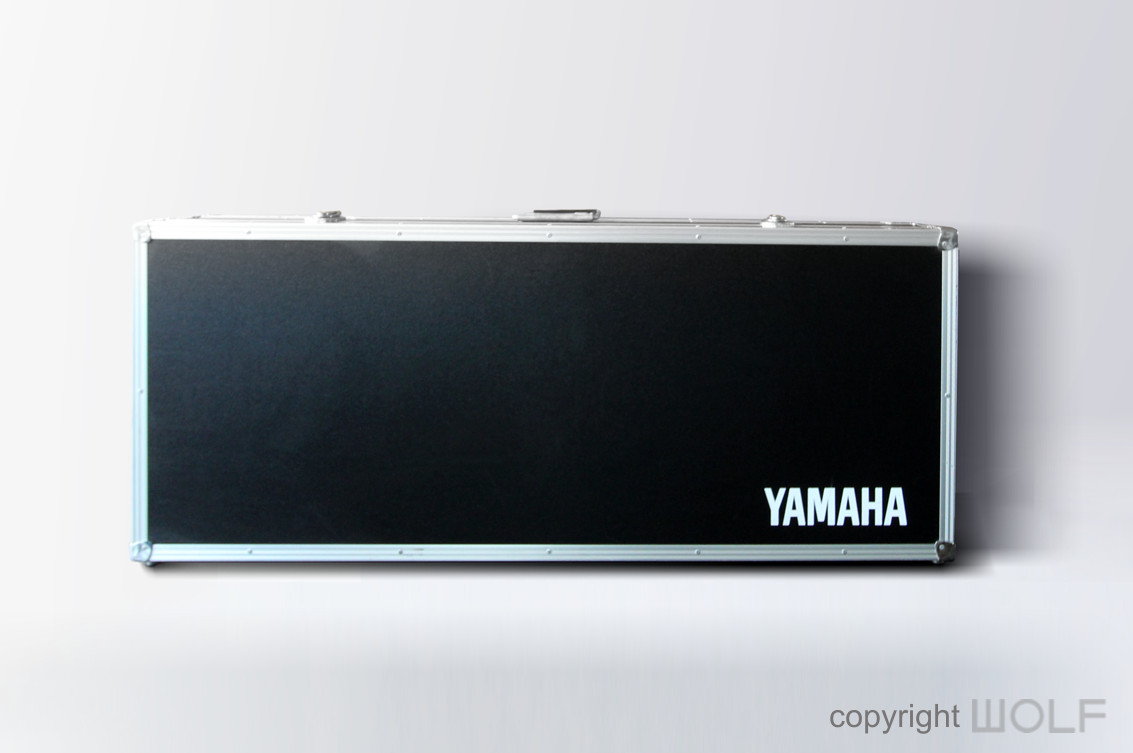 The original hard case- always worth having. This is the LC-SY1H
The original hard case- always worth having. This is the LC-SY1H

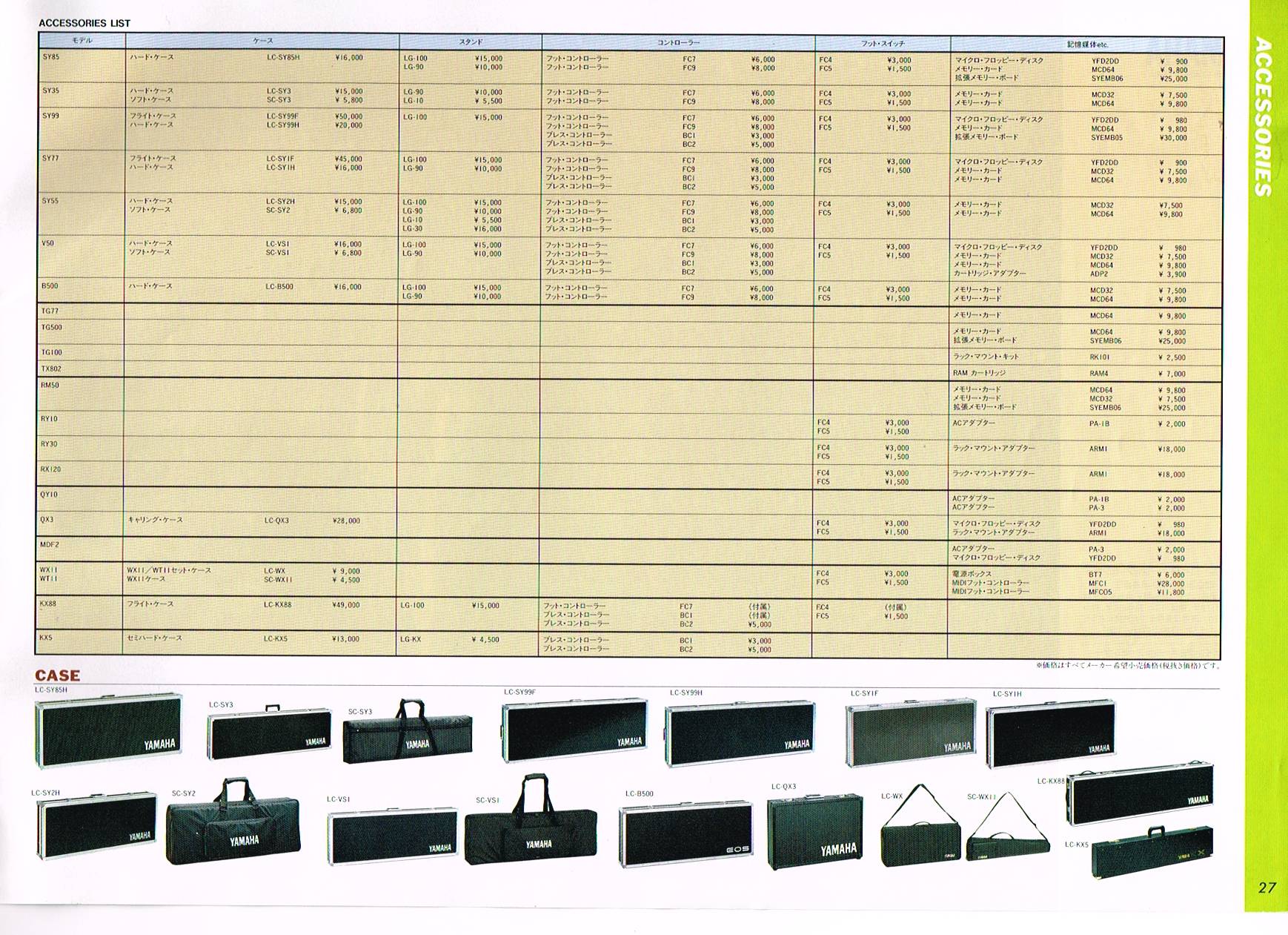
A 1992 Japanese Catalog shows the LC-SY1F in still a different colour, though not gold.
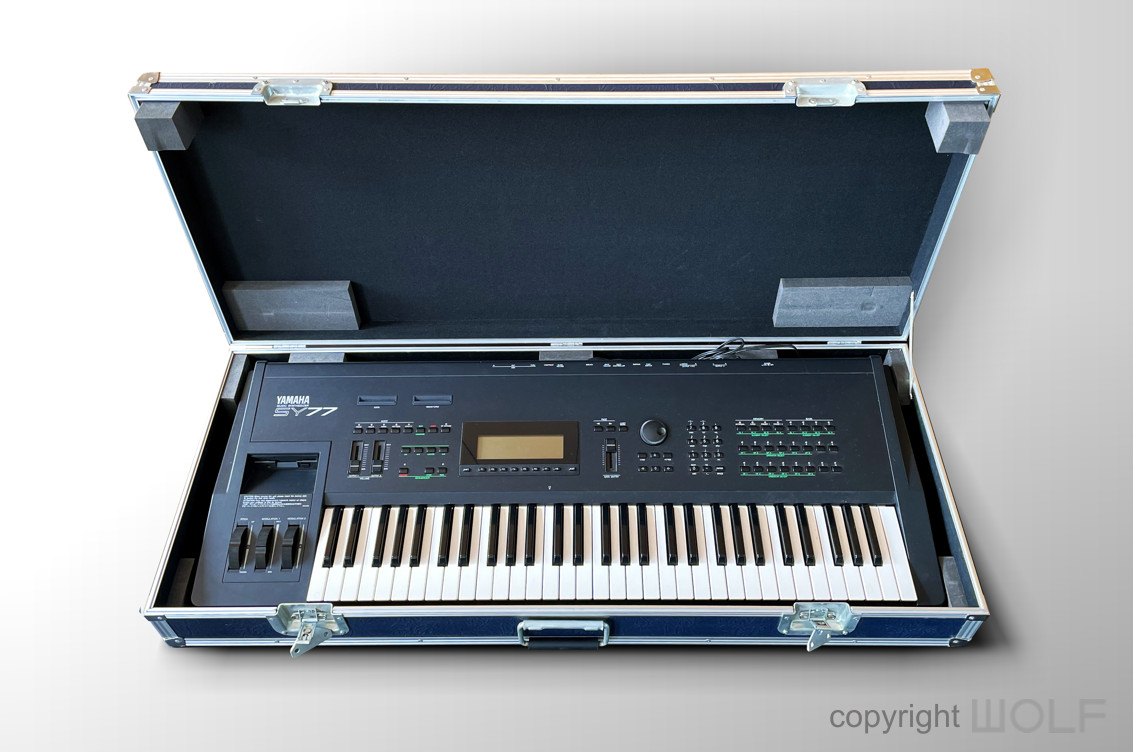
A perfect fit
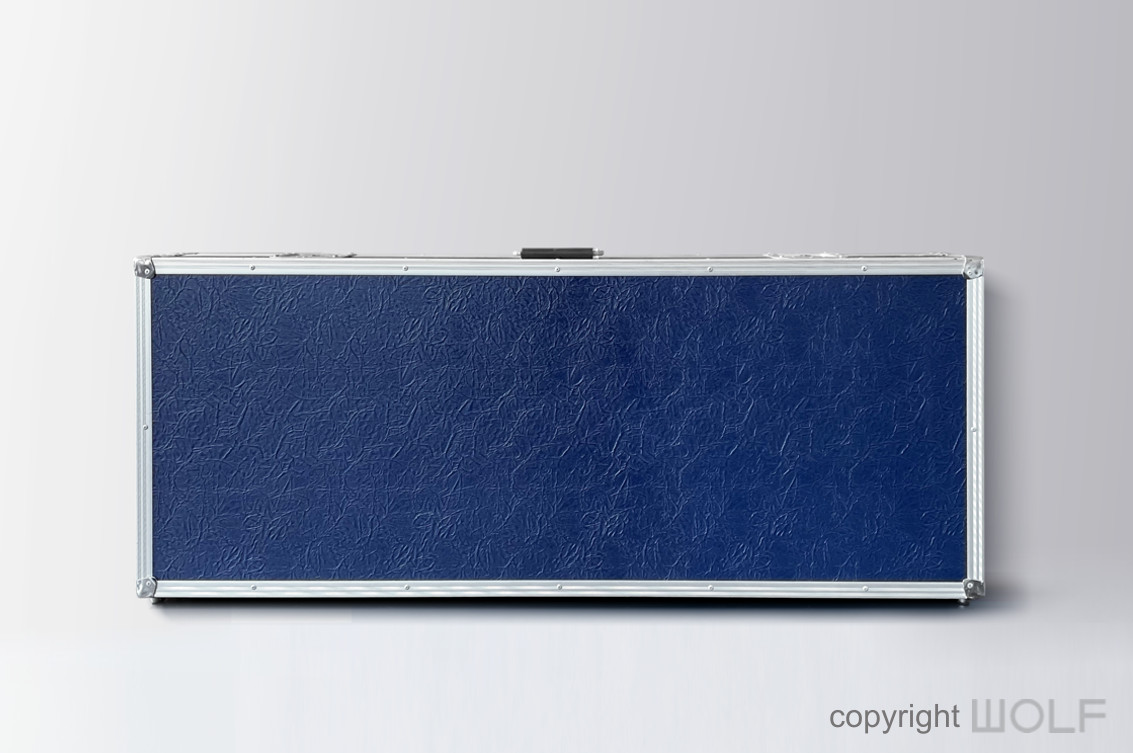
This flight case came with an SY77 Purchased from Japan. We believe that it could be the elusive LC-SY1F. It is the exact same size as the hard case, with the same edges, corners and handle. It also uses the same surface material found on the DX7II series hard case, except in a dark blue. The only doubt we have comes from the fact that this case does not say YAMAHA on one side. It’s possible that it wore away as many DX7II hard cases lost their logos due to a poor adhesion between the label and the rubberized surface. Or perhaps Yamaha simply did not put their logos on this flight case, though that is highly unlikely. If we ever find another SY77 flight case, we may be able to confirm.
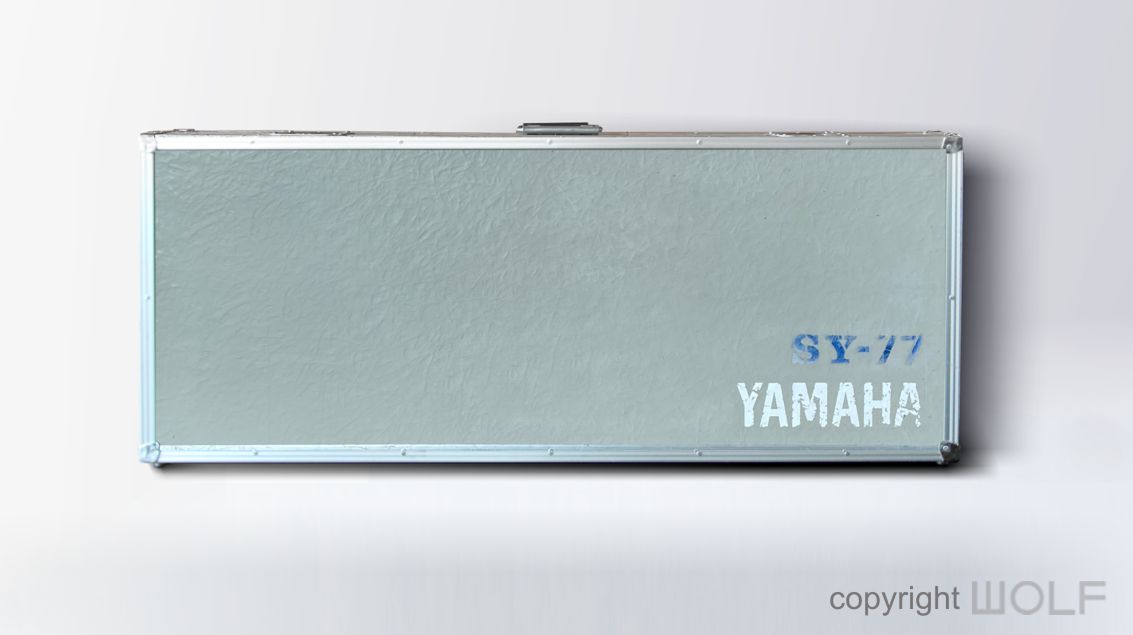
This is another flight case that came with an SY77 Purchased from Japan. It could also be the elusive LC-SY1F as it is the exact same size as the hard case, with the same edges, corners and handle. It also uses the same surface material found on other flight cases but in grey. The grey is also consistent with the lighter colour illustrated in all known trade literature with the LC-SY1F. This case also has the correct YAMAHA logo in white and slightly larger than on the hard case which is another consistency with the trade literature. Have we finally found the LC-SY1F?
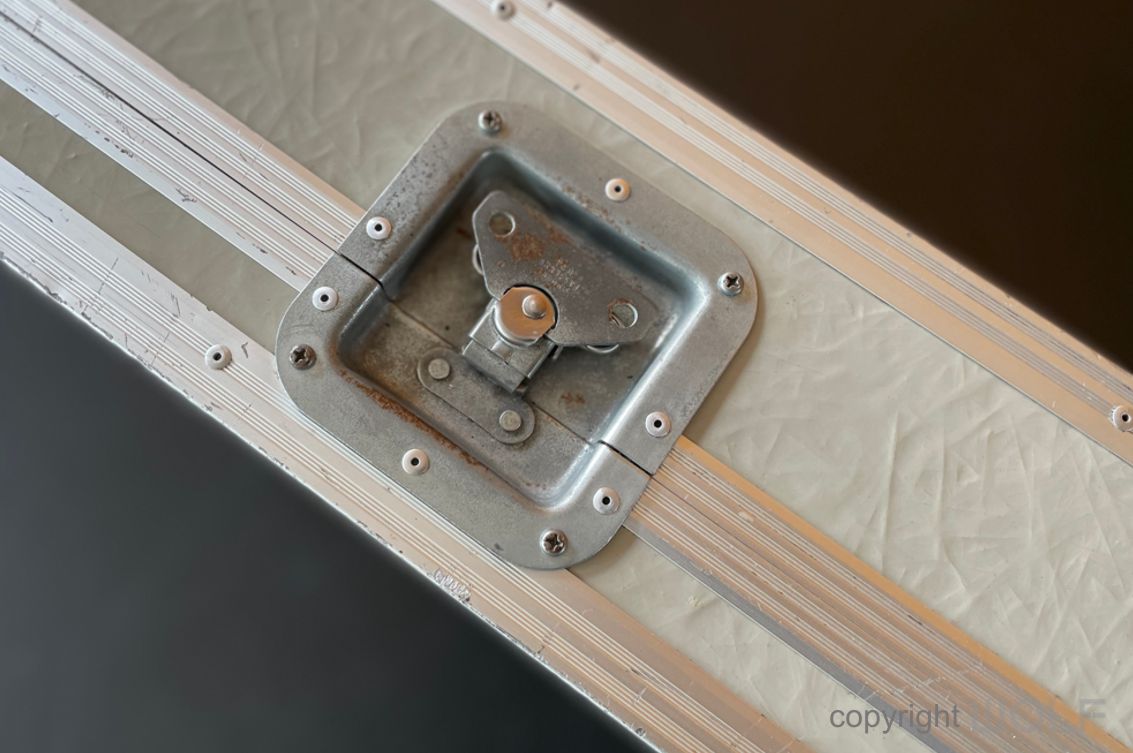 The only inconsistency with both the Blue and Grey cases above are the designs of the latch handle which is more straight. All other known Yamaha Flight case latches of the same era had a curved shape.
The only inconsistency with both the Blue and Grey cases above are the designs of the latch handle which is more straight. All other known Yamaha Flight case latches of the same era had a curved shape.
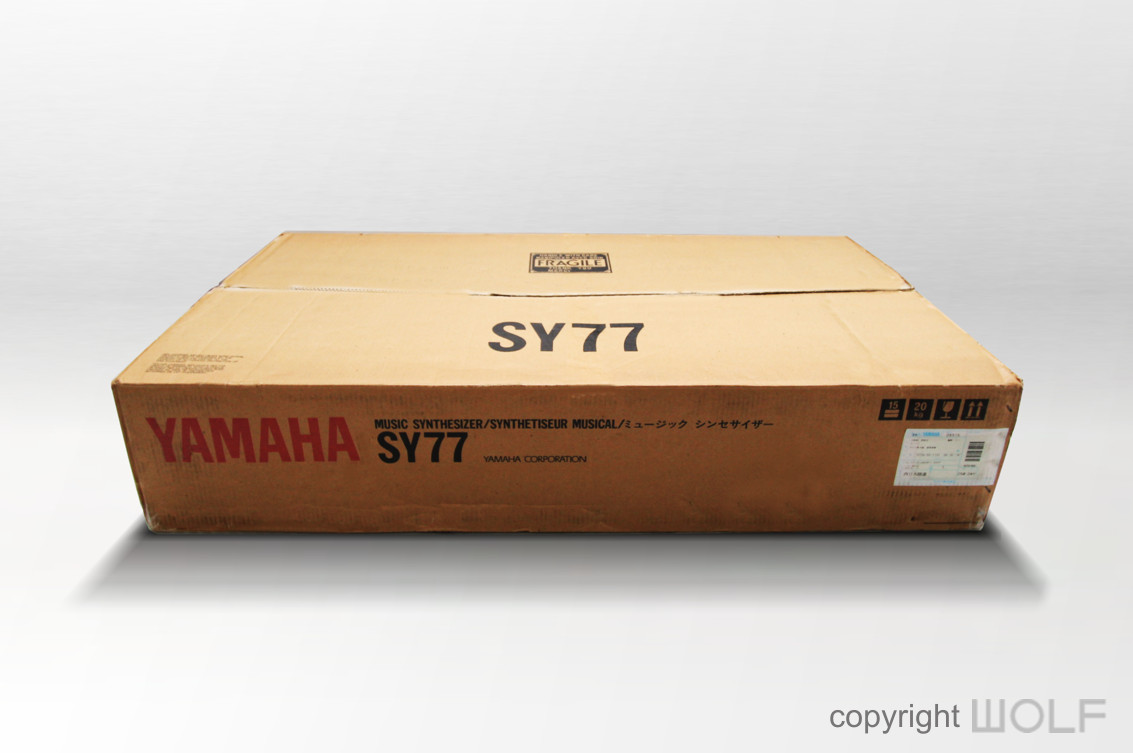
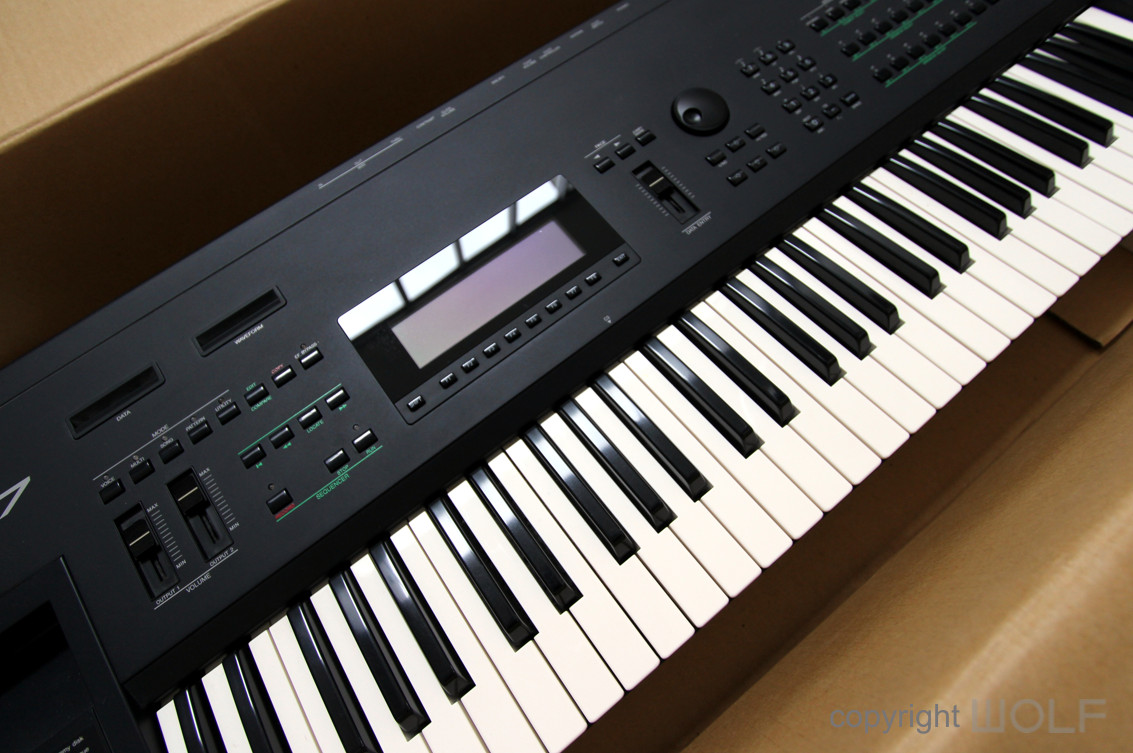

The manual had a more durable semi-plastic cover which was more durable and came in 3 volumes, (each in a different language).
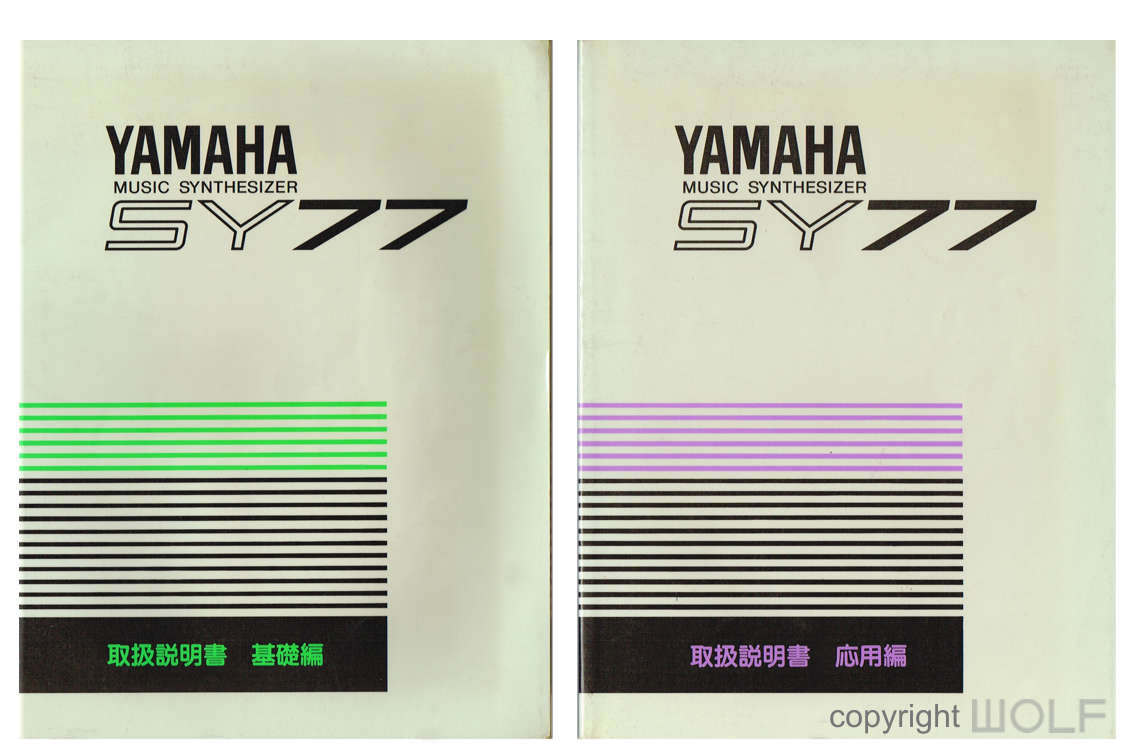
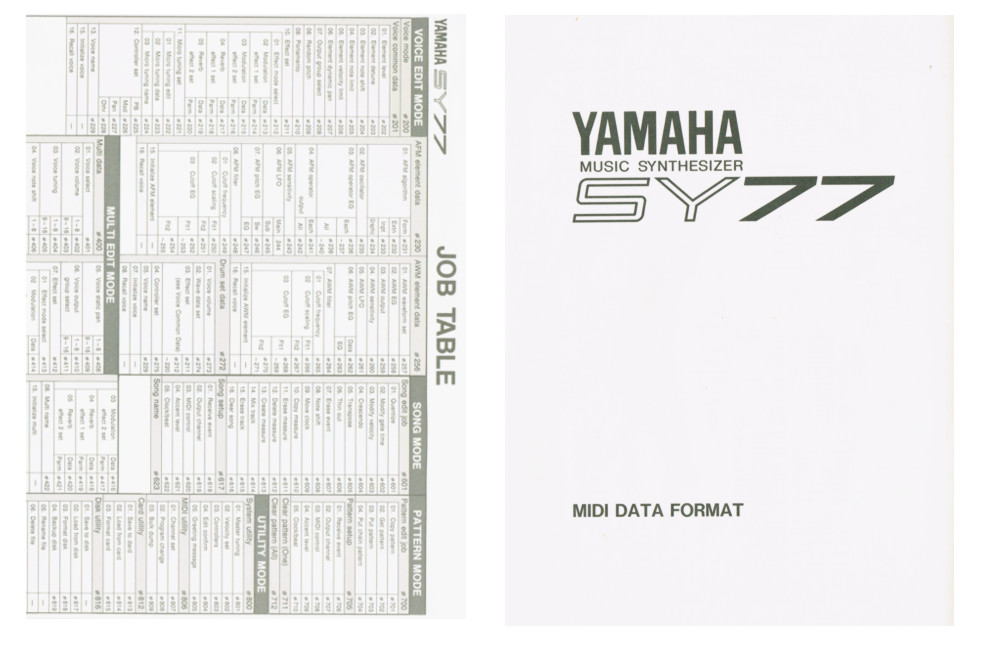
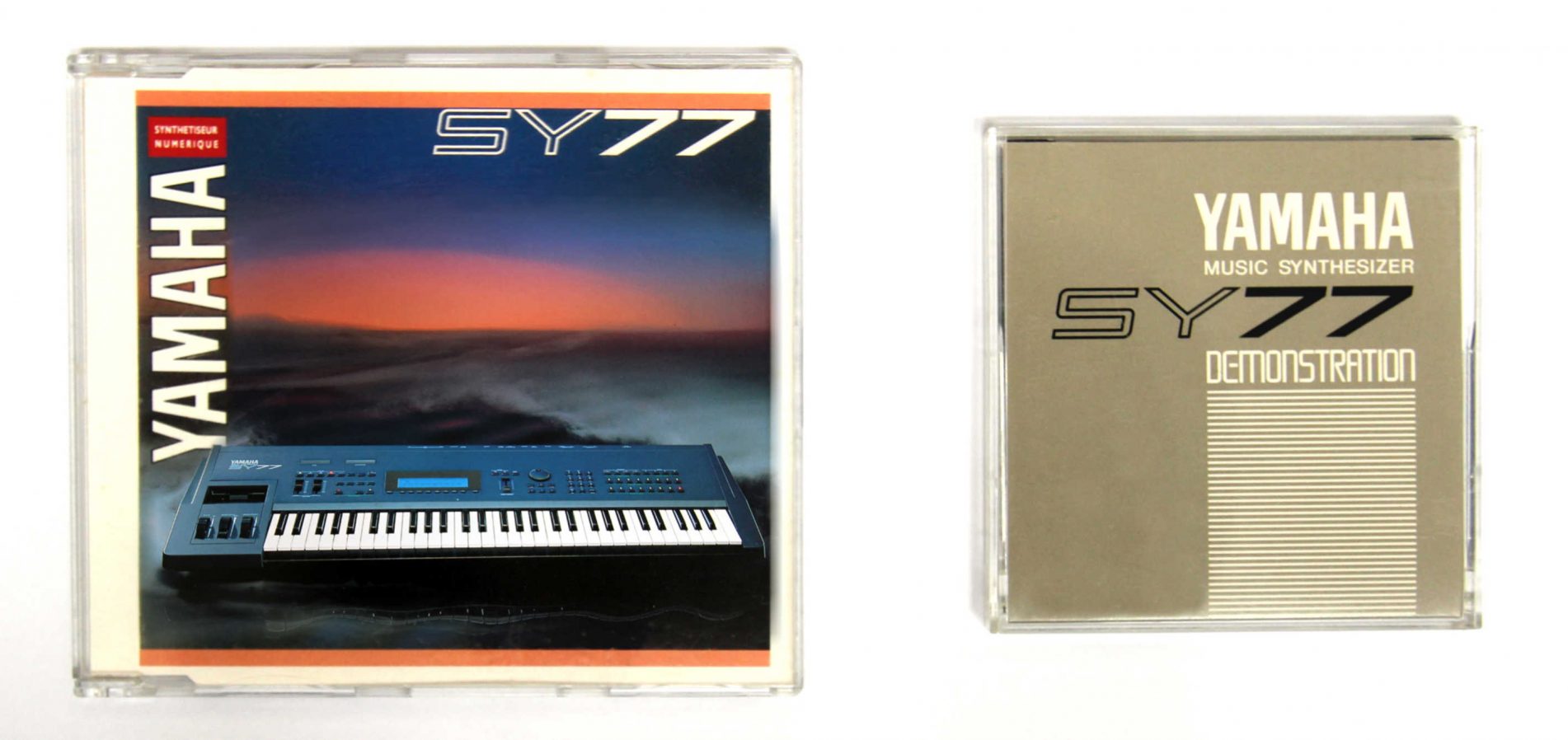
There were two demonstration disks for the SY77. That on the left is a very rare demo CD featuring 5 songs composed fully on the SY77. This we understand was exclusive to dealers to demo to customers and not meant for public resale. The floppy disk on the right was a standard demo disk that came standard with every SY77.
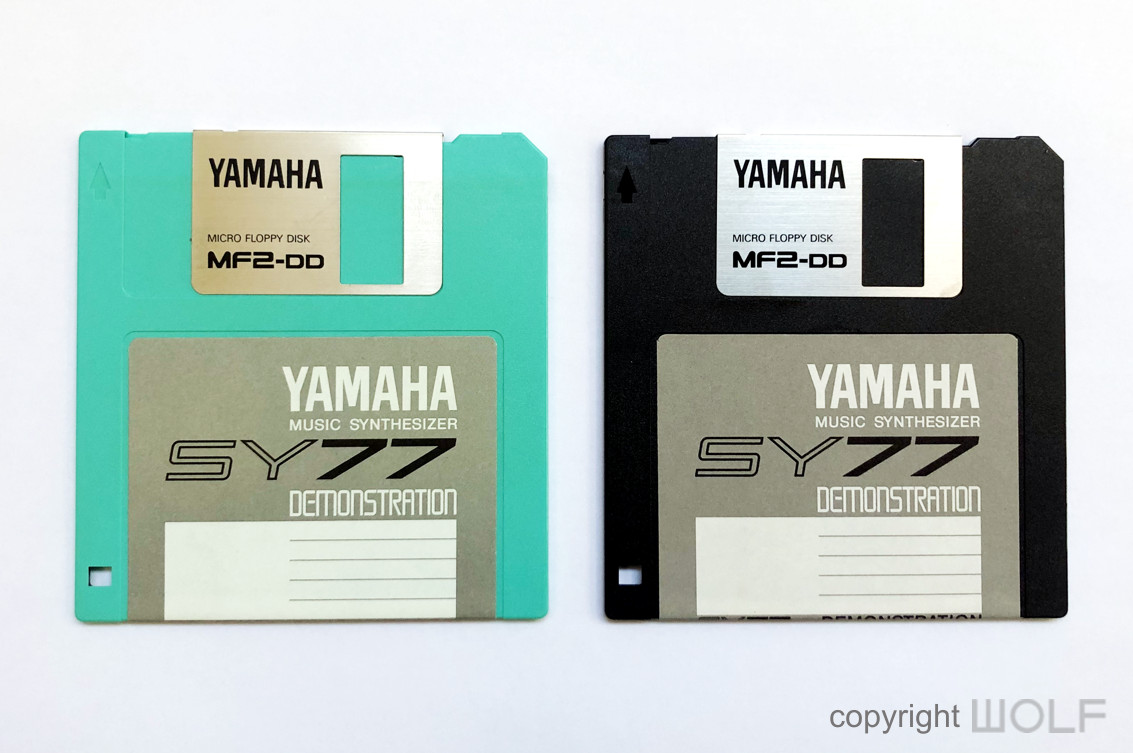
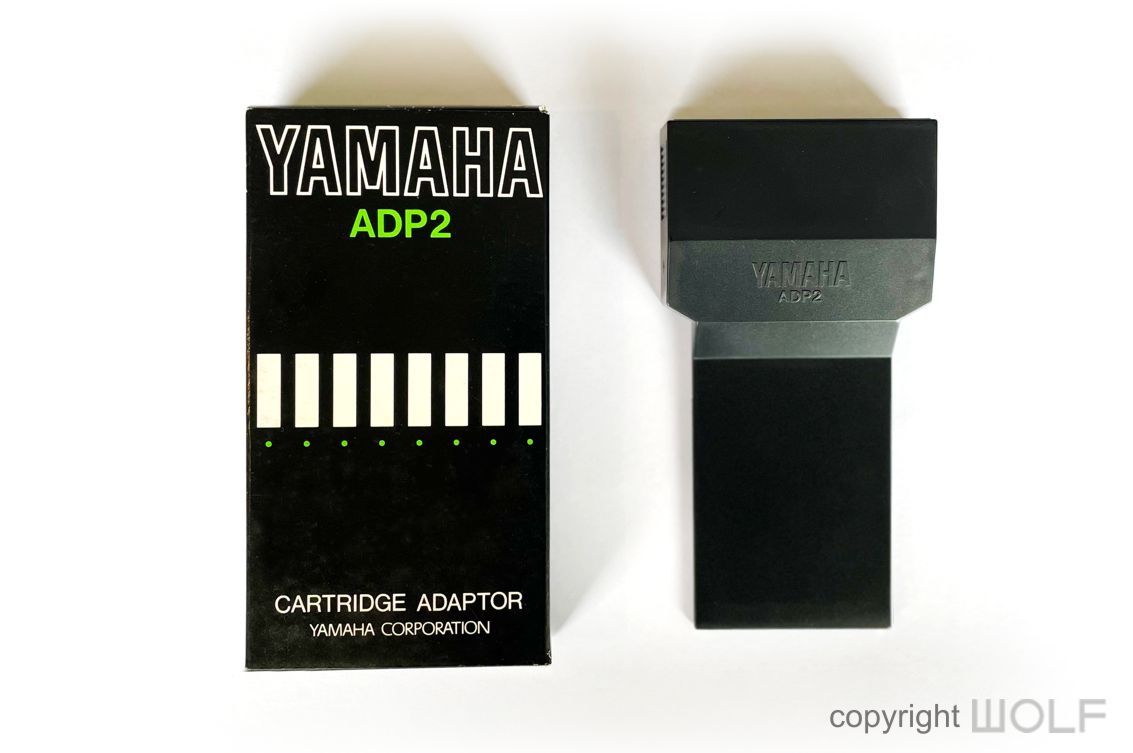
The ADP2 is one of Yamaha’s most rare synthesizer accessories. It was relatively unknown as it was rather unnecessary due to disk drive technology. The ADP2 allows you to directly access sounds from DX ROM cartridges. Interestingly we have yet to see the ADP2 featured in any of Yamaha trade literature. This image is of one found in Japan and is in mint condition with original box.
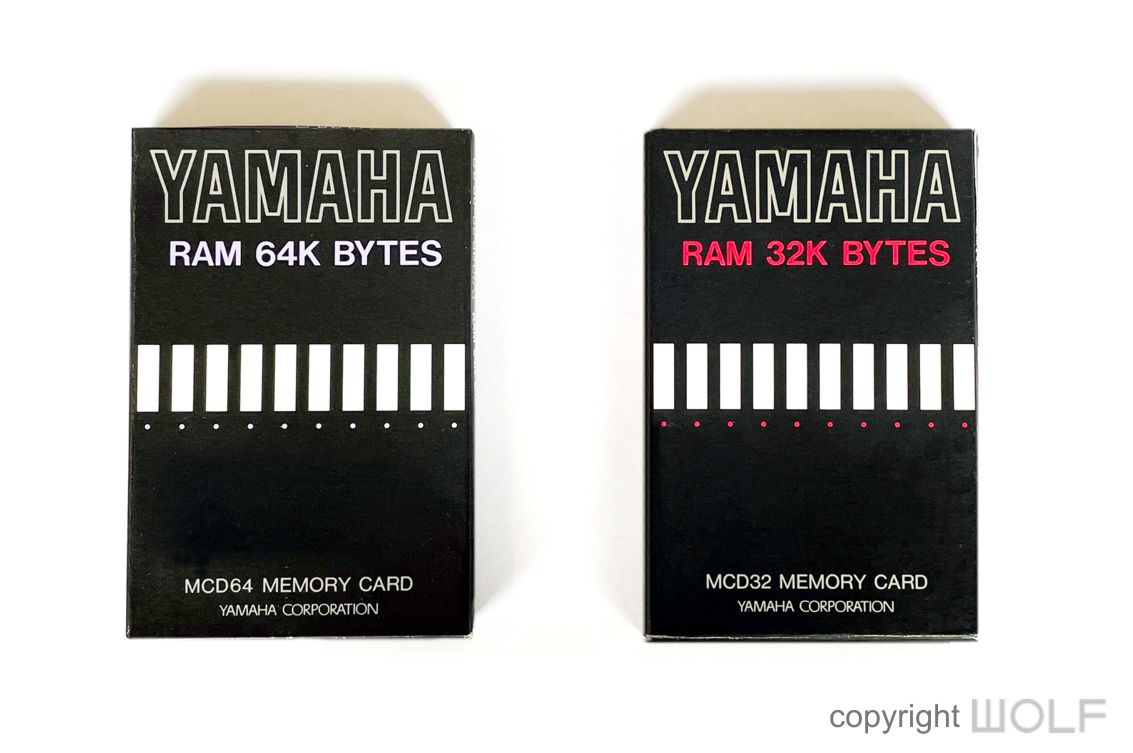
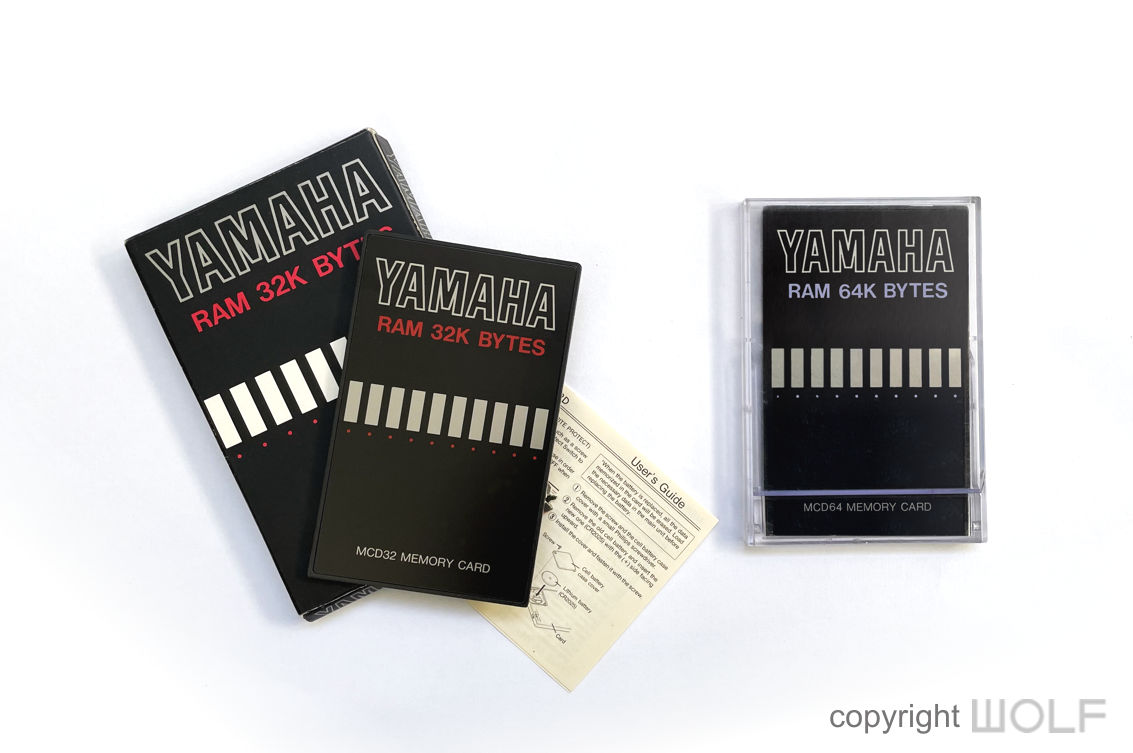 The SY77 still had card slots which was rather strange given that it also had a disk drive because disks were more versatile and affordable. There were two RAM storage cards, the 64K and the 32K, which both came with protective clear plastic hard cases.
The SY77 still had card slots which was rather strange given that it also had a disk drive because disks were more versatile and affordable. There were two RAM storage cards, the 64K and the 32K, which both came with protective clear plastic hard cases.
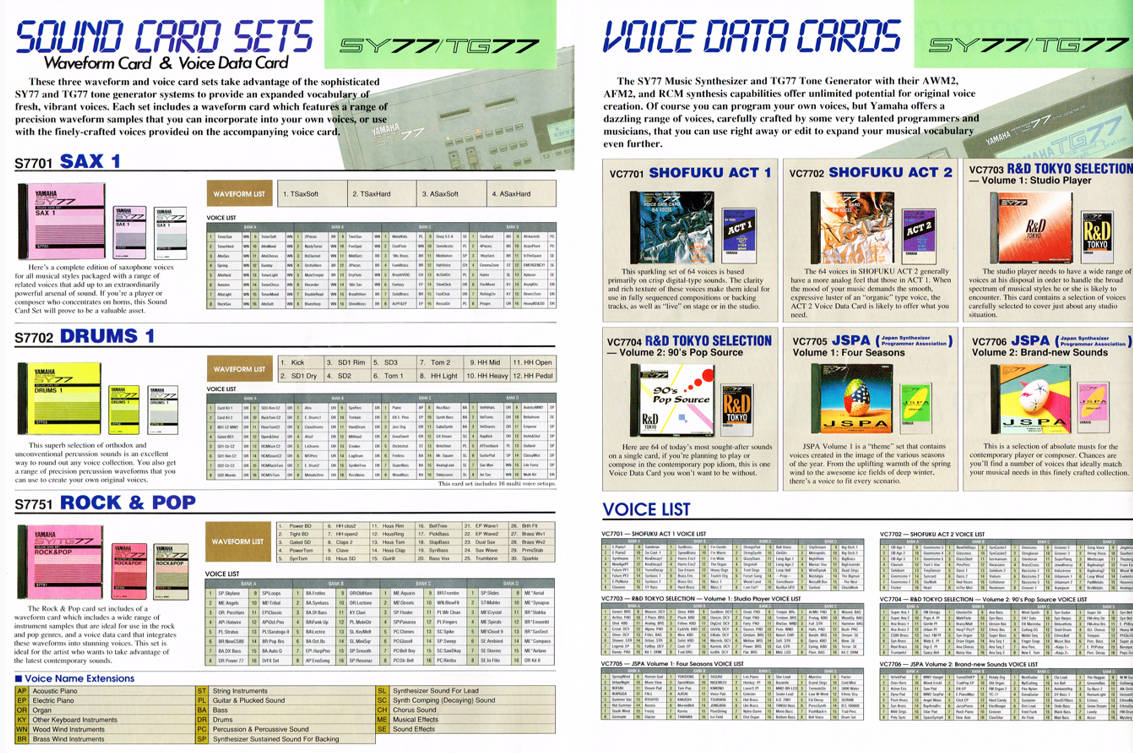
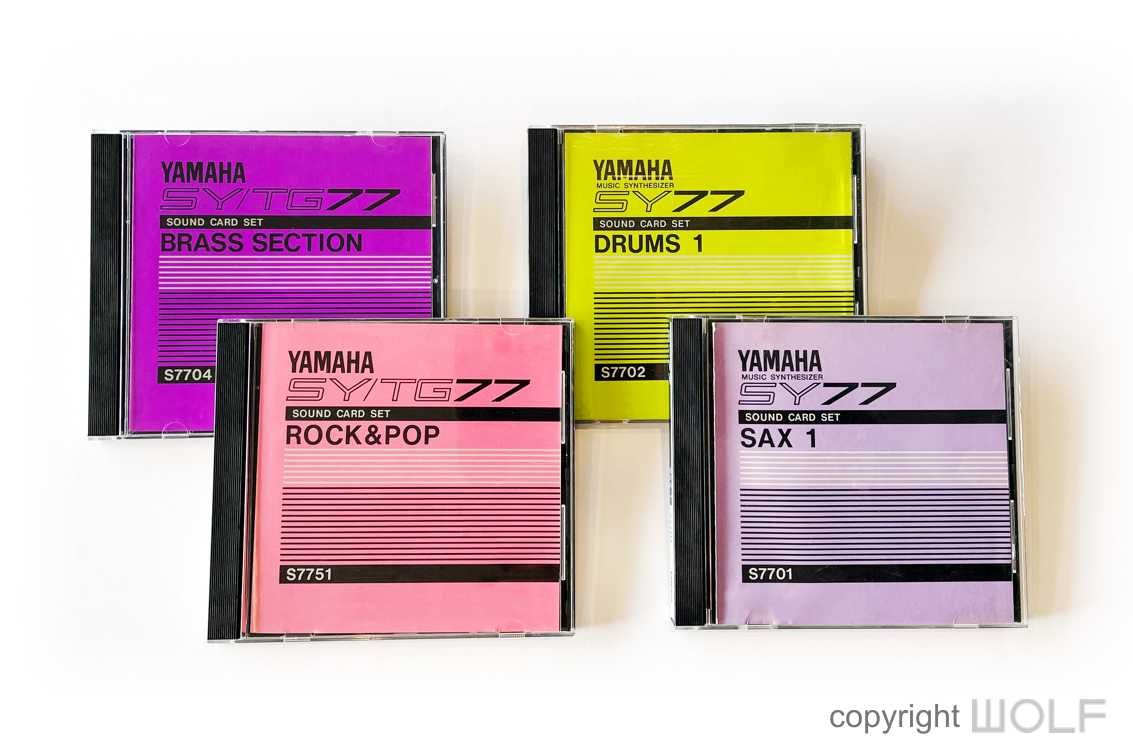 The initial release had graphics similar to those on the instruction manuals
The initial release had graphics similar to those on the instruction manuals

Two cards inside the original series, later issues had just one card.
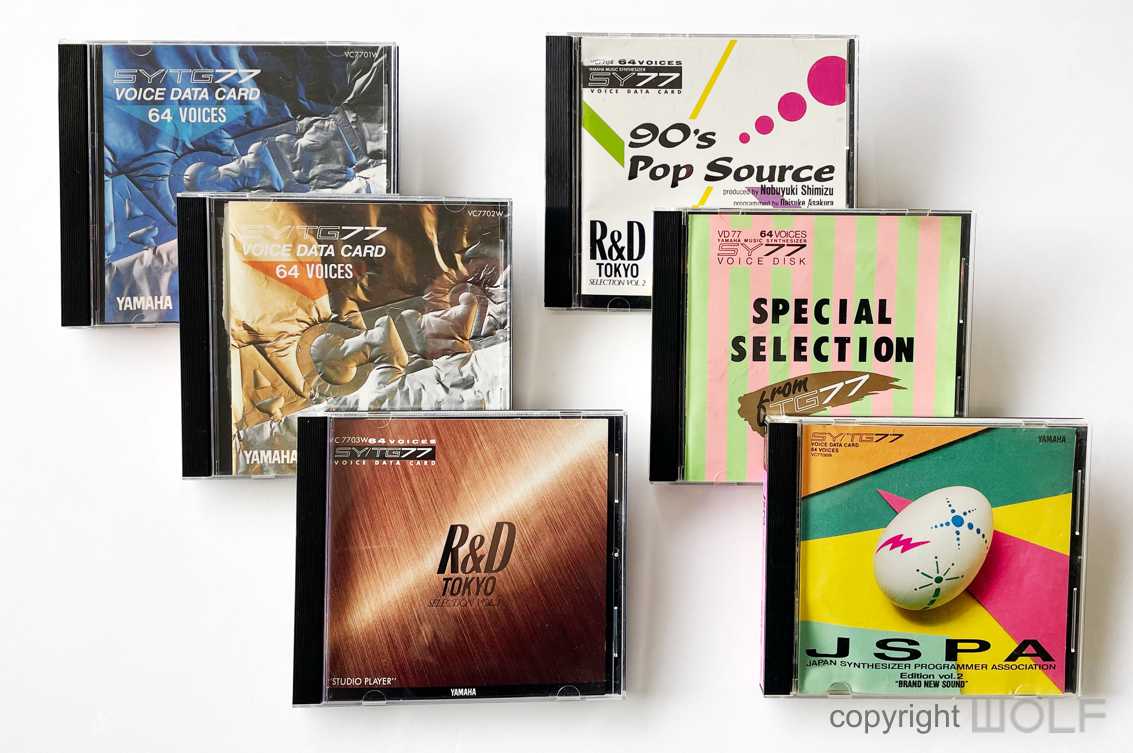
Later sound cards had more creative and colourful graphics.
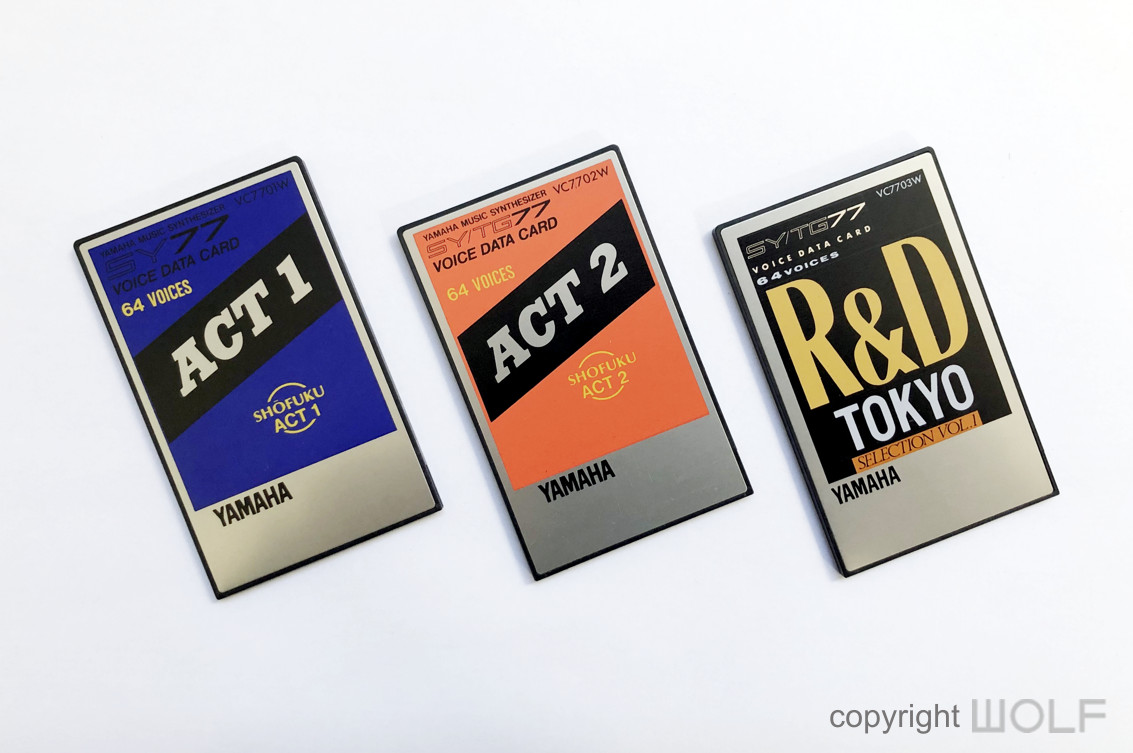
The sound cards are beautiful objects in themselves that are well crafted with a good weight to them.
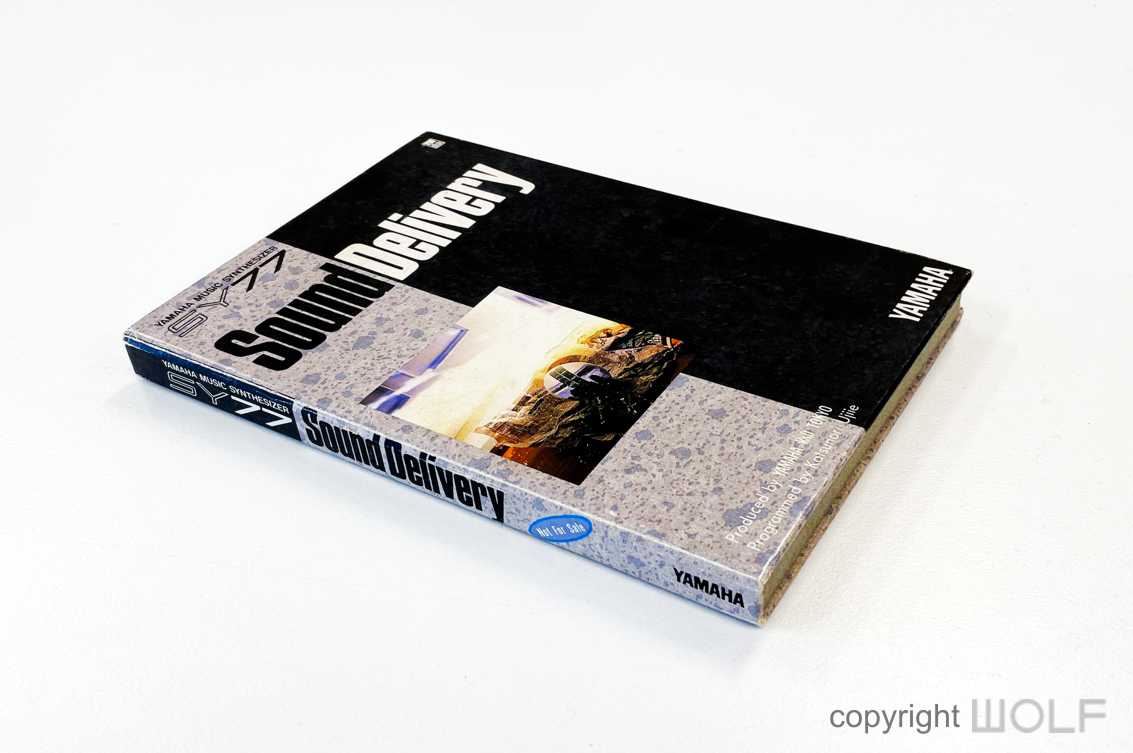
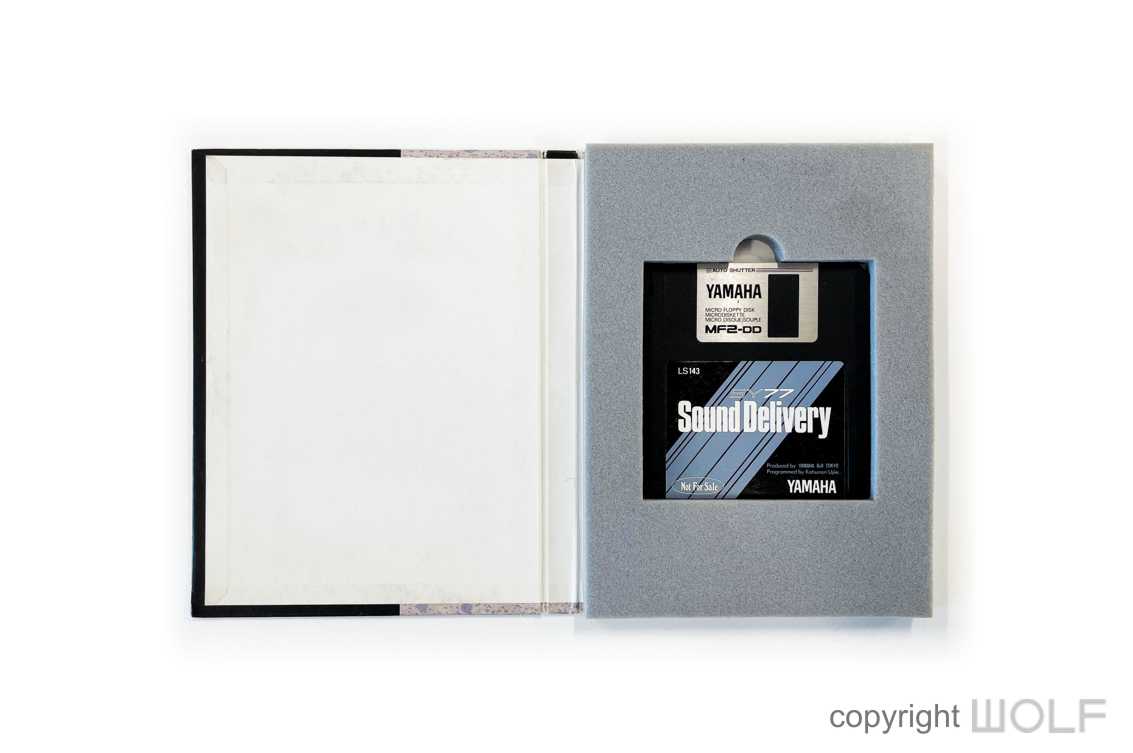
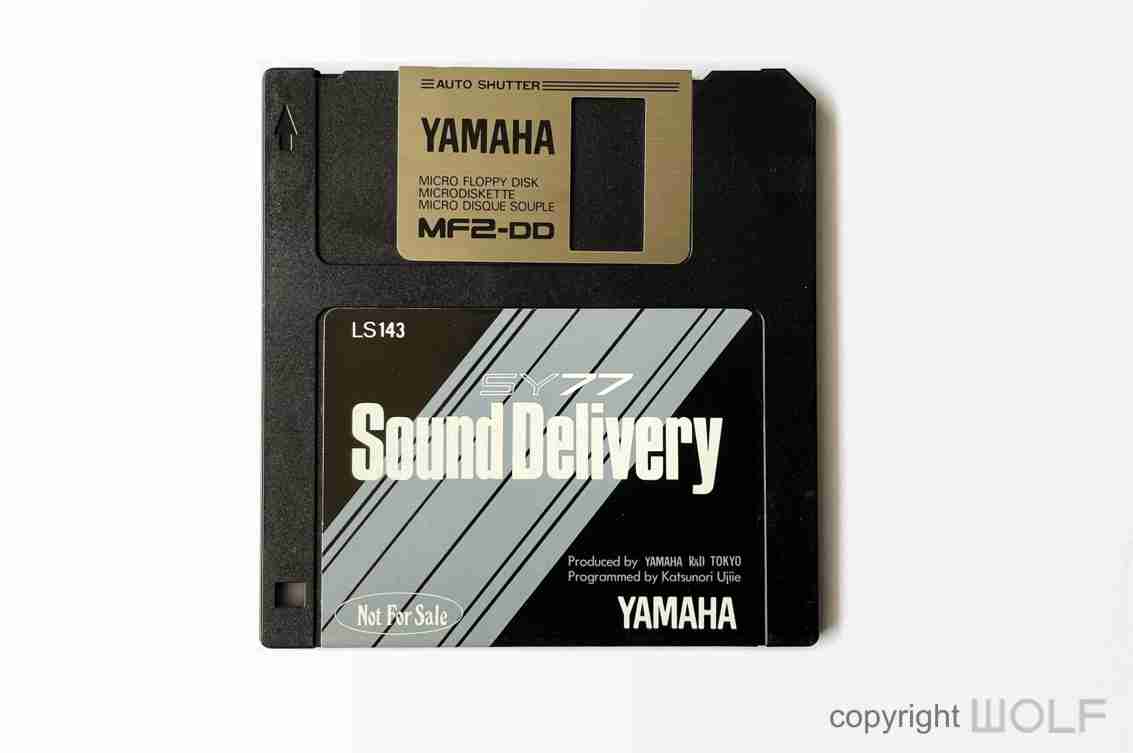
Could this be the most rare sound disk available for the SY77? We found it in Japan and it’s labeled “Not For Sale”, which suggests that it could have been something exclusive for the sales team to use for demonstration purposes.
WORD OF THE WOLF
We like the SY77 for what it tried to achieve and for what it represents but it could not live up to the significance of the DX7 and maybe nothing ever will. It was then overshadowed by its younger but bigger brother the SY99 that was significantly better. Out of the entire SY range the SY77 and SY99 are the only one’s worth collecting in our opinion. They are both still very usable from sound and functional perspectives. We don’t recommend looking at any of the smaller SY models which seem very limited and even more plasticky.

The SY77 had a beautiful brochure that was significantly better than its predecessors.
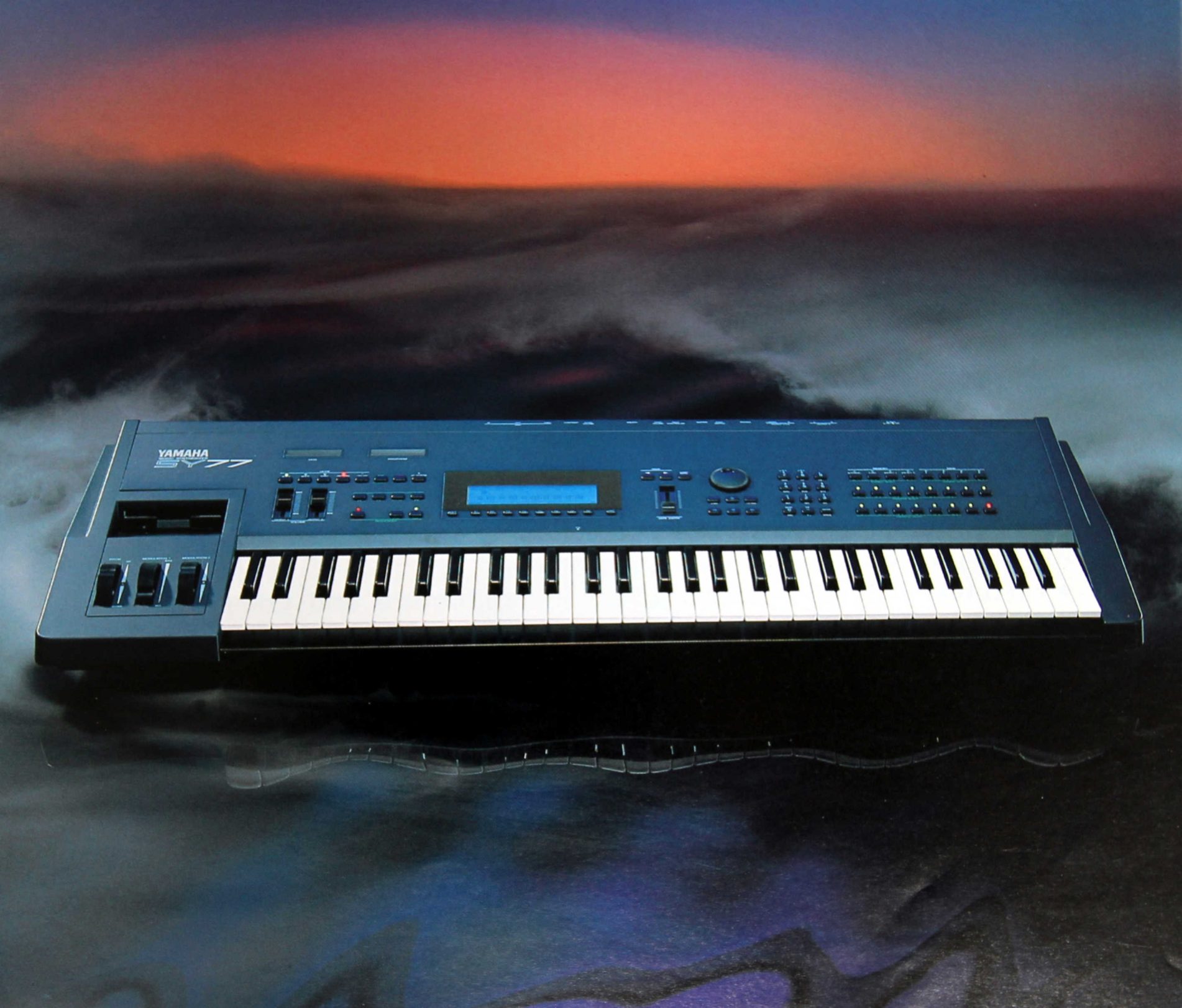
In the days before Photoshop this photo remains one of Yamaha’s finest synthesizer photos.
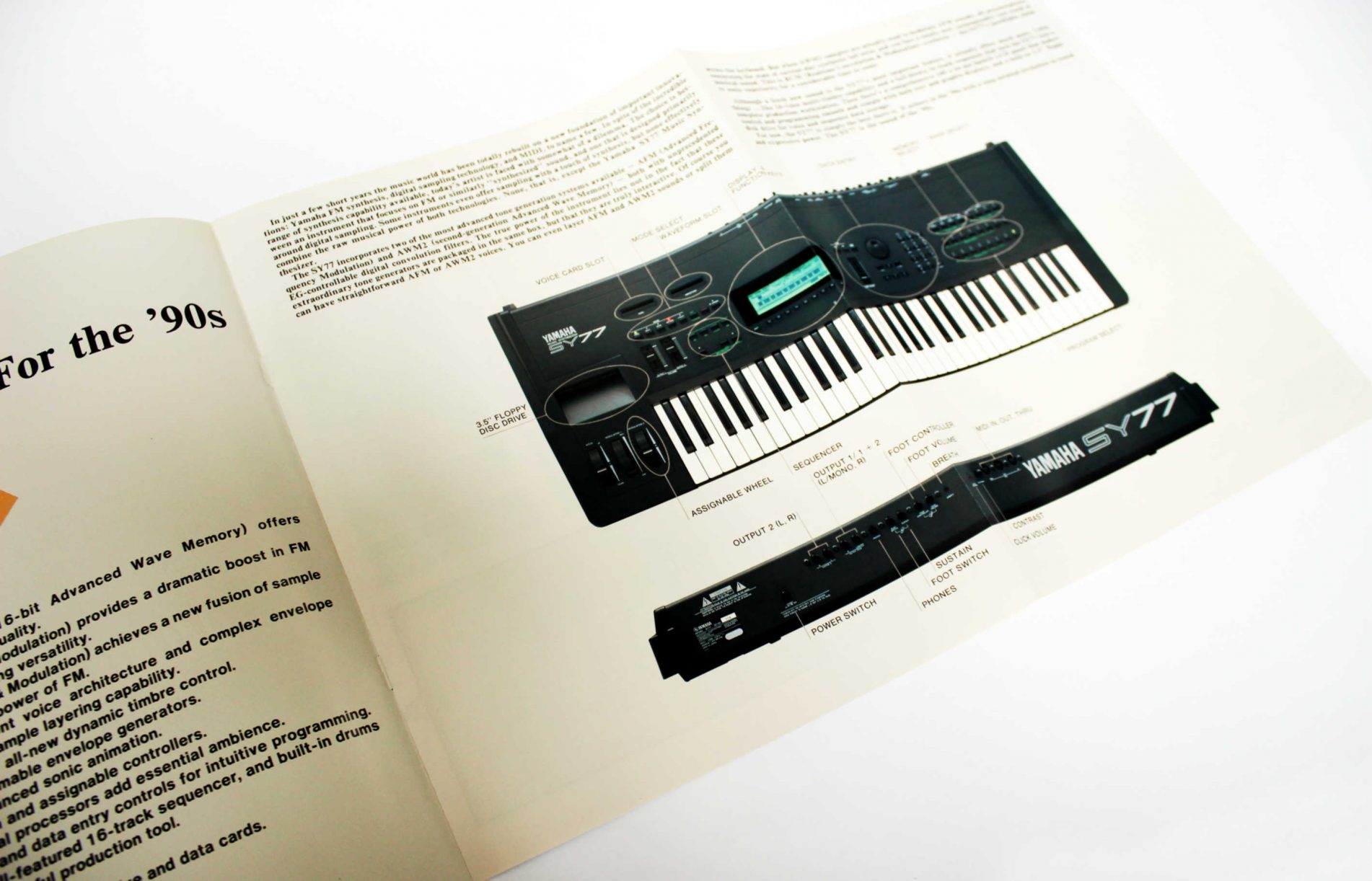
A neat center fold out.
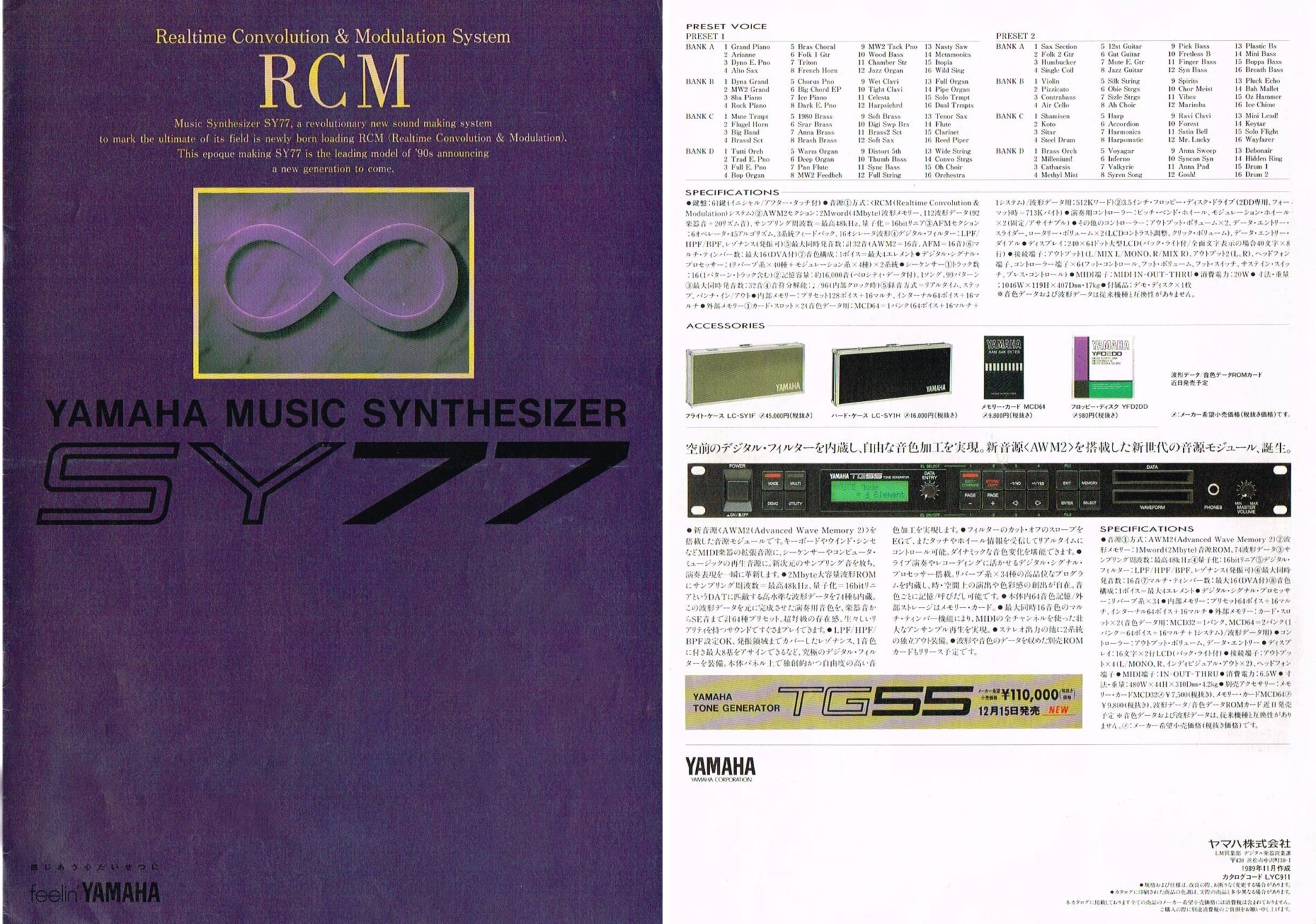
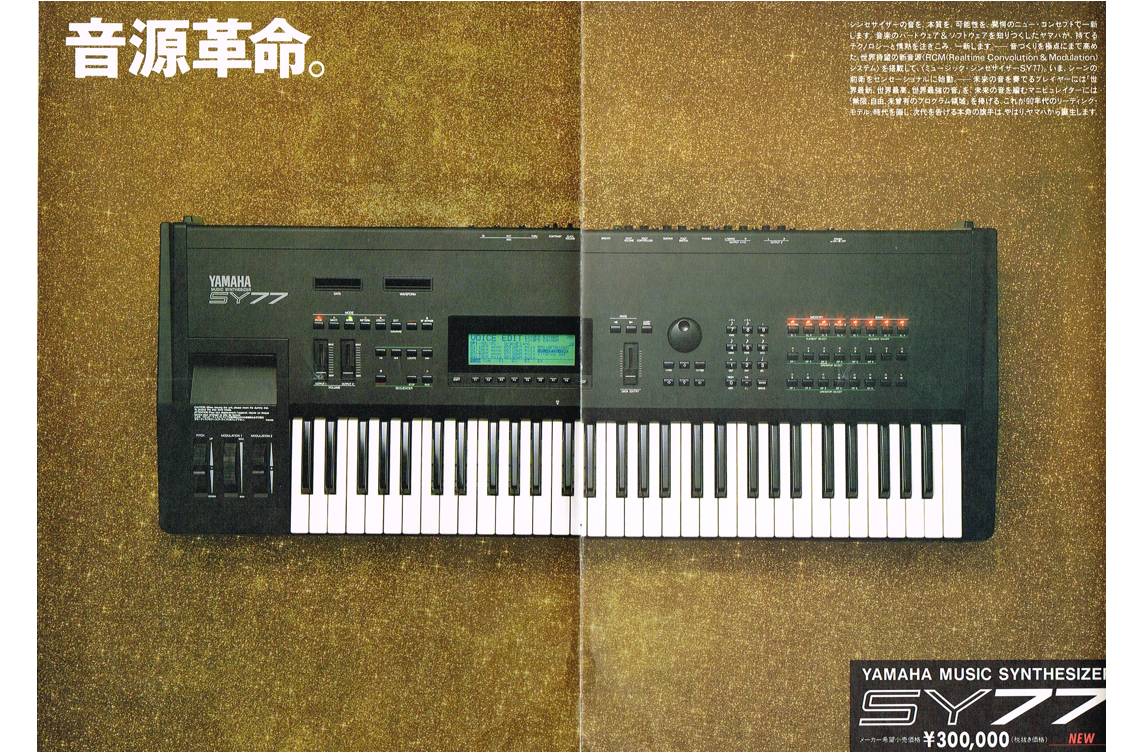
In Japan the SY77 had another brochure that explained its RCM system in greater detail. This brochure shown above is very rare.
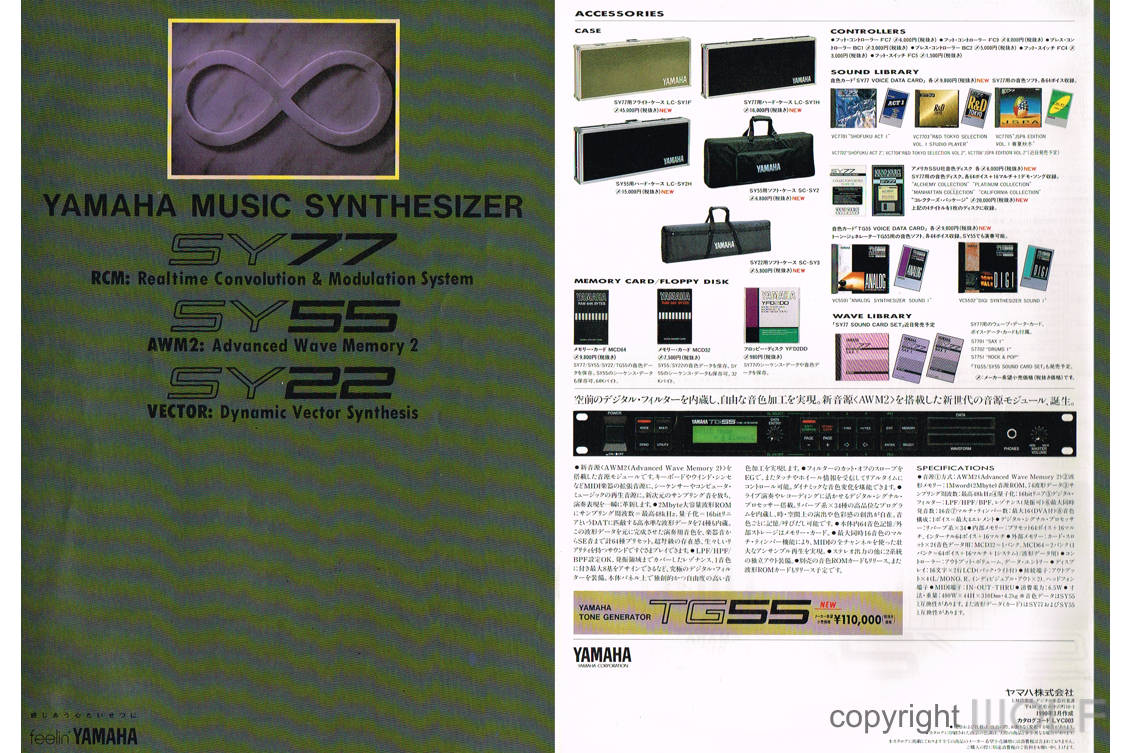
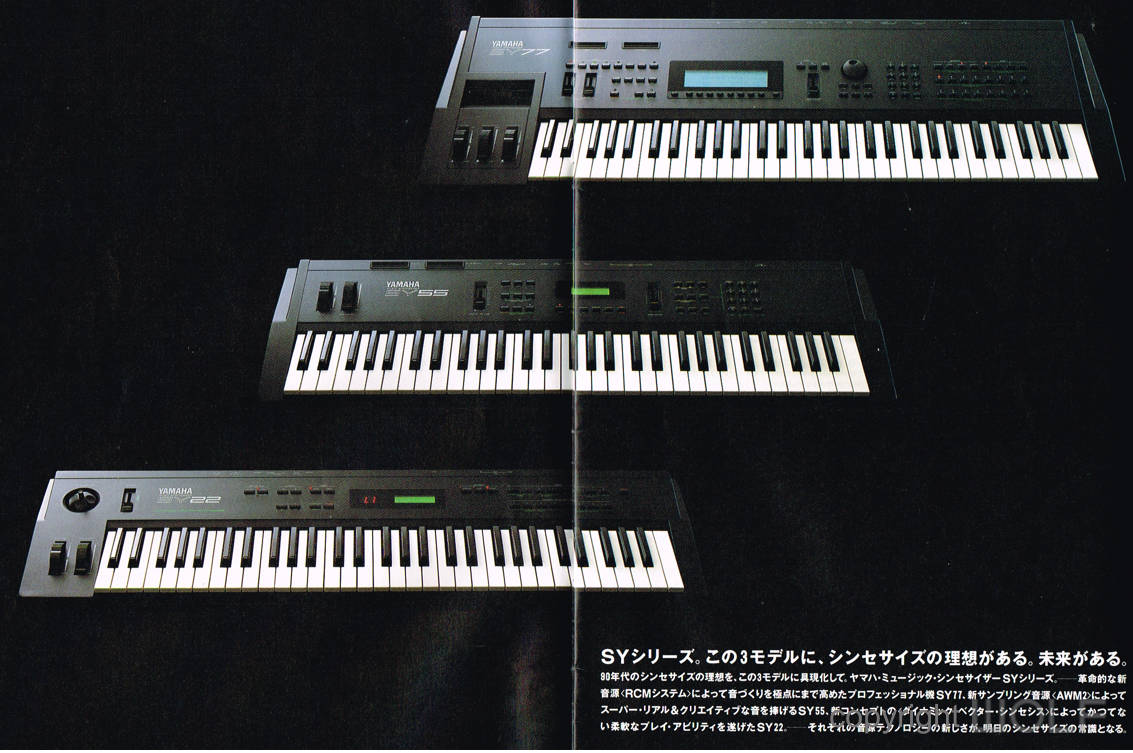 Another Japanese brochure with the SY77 as the head of the SY family.
Another Japanese brochure with the SY77 as the head of the SY family.
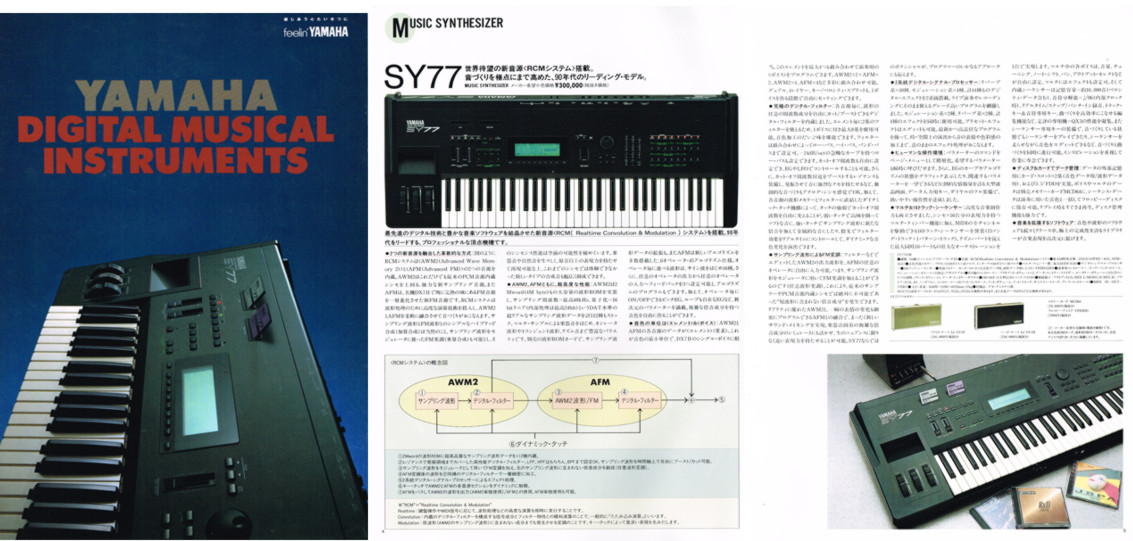
Japanese YAMAHA 1990 product catalog presented the SY77 on the front cover and with a two page spread within.
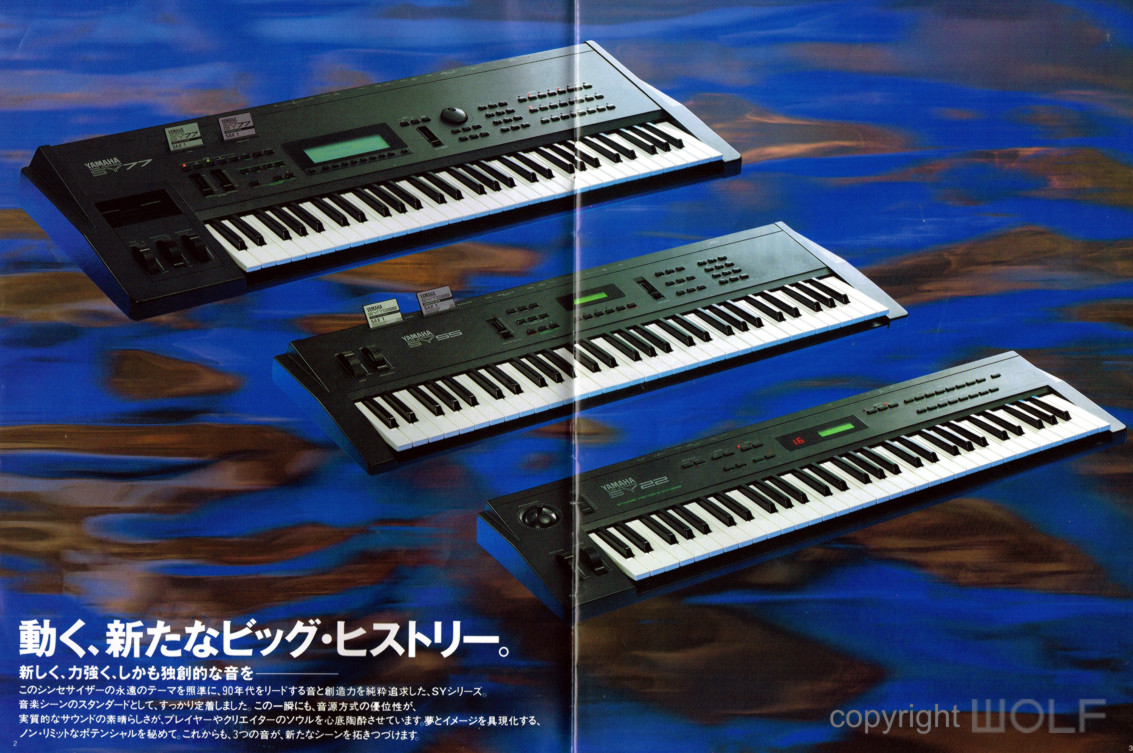
Japanese YAMAHA 1990 product catalog had this interesting Graphic photograph of the S&& with its smaller cousins.
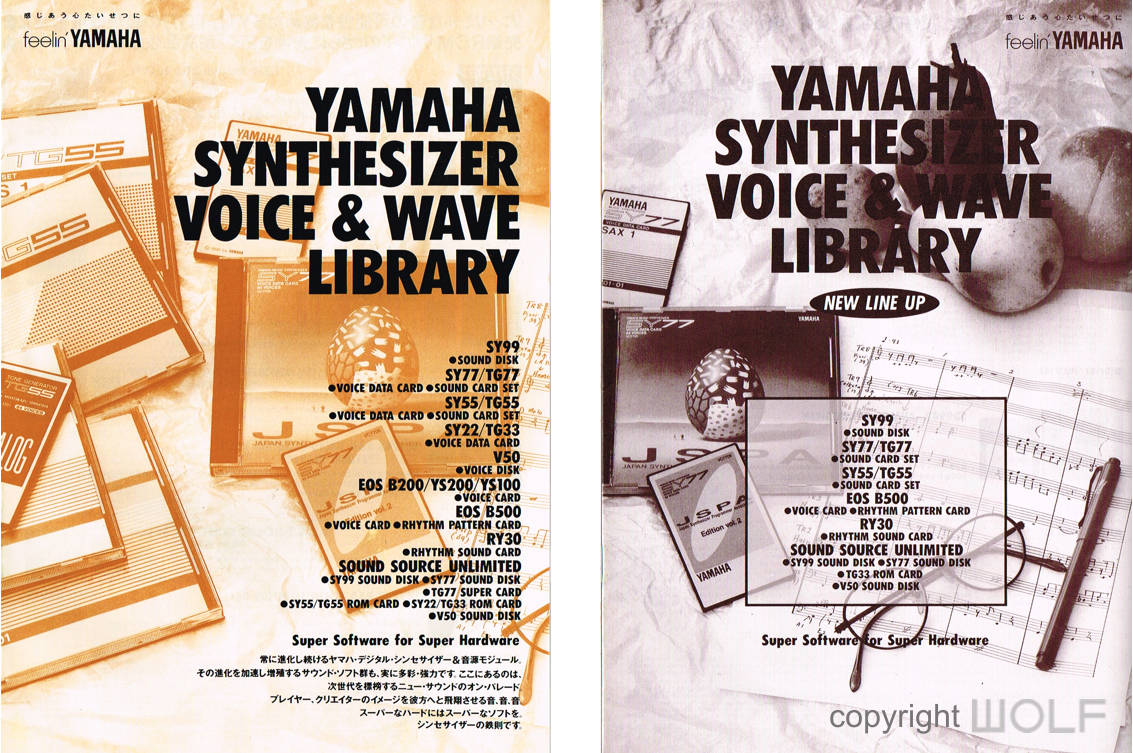
Rare Japanese brochures with extensive information on the Voice & Wave library for the SY series.
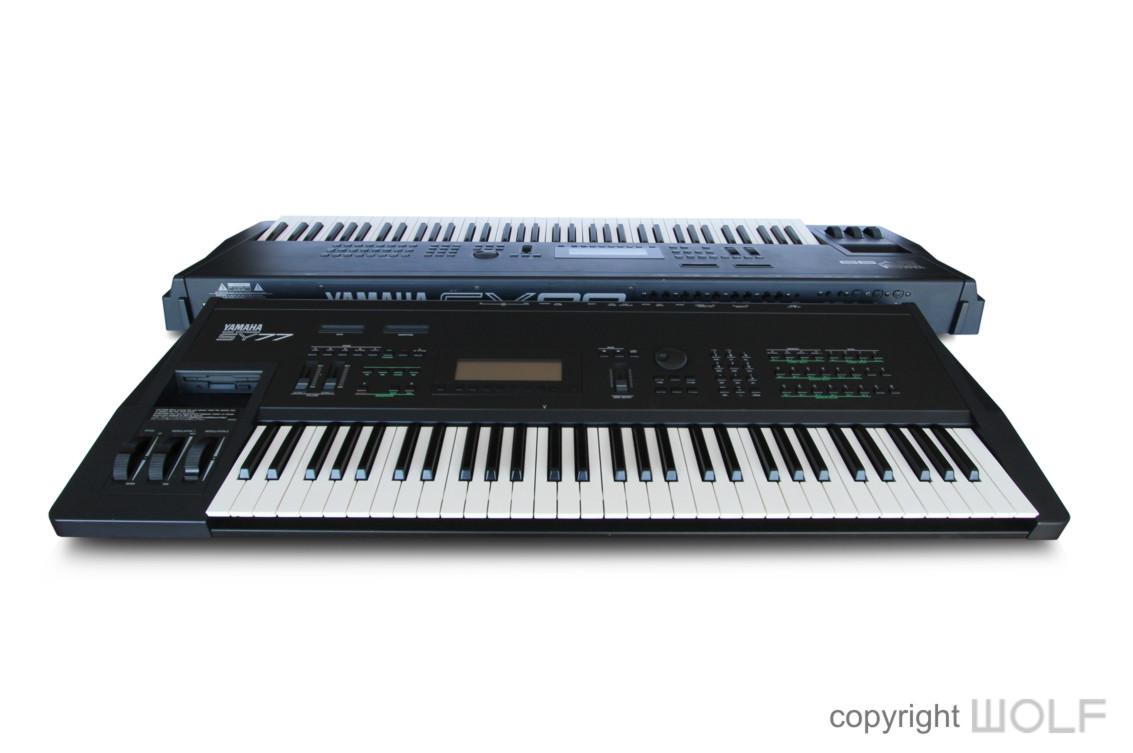
Size comparison between the SY77 and the SY99 that followed it.
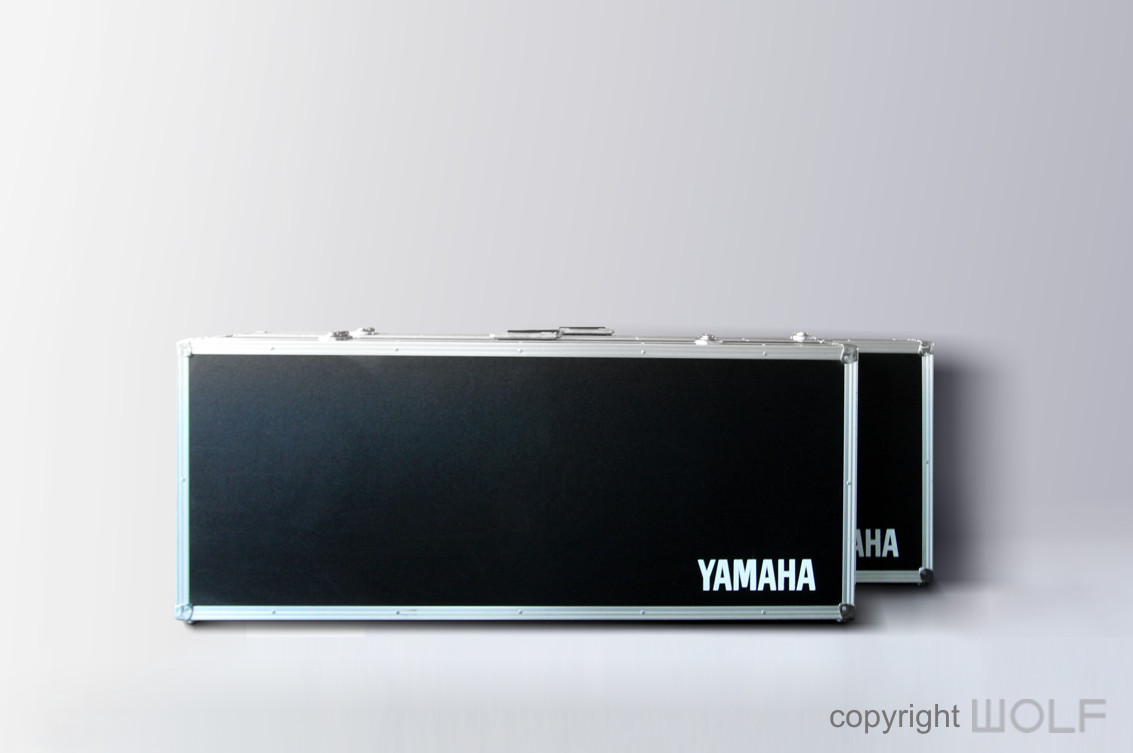
Size comparison between the cases of the SY77 and the SY99 that followed it.

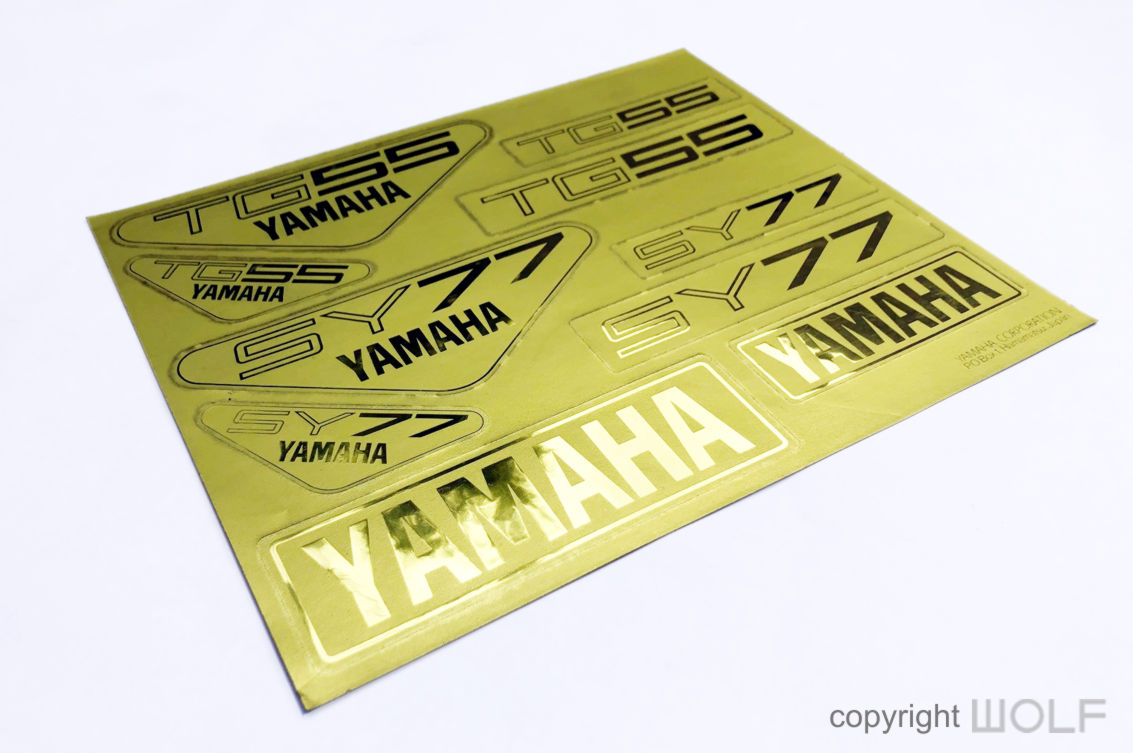 A very rare Golden Sticker sheet, which was a promotional item for the SY77. This specimen came from Yamaha in Singapore and may be the only one left on the planet.
A very rare Golden Sticker sheet, which was a promotional item for the SY77. This specimen came from Yamaha in Singapore and may be the only one left on the planet.
 This unique personal planner was an exclusive in the USA. We don’t know if this was available to consumers or to Yamaha staff but it was definitely specific to the SY77.
This unique personal planner was an exclusive in the USA. We don’t know if this was available to consumers or to Yamaha staff but it was definitely specific to the SY77.
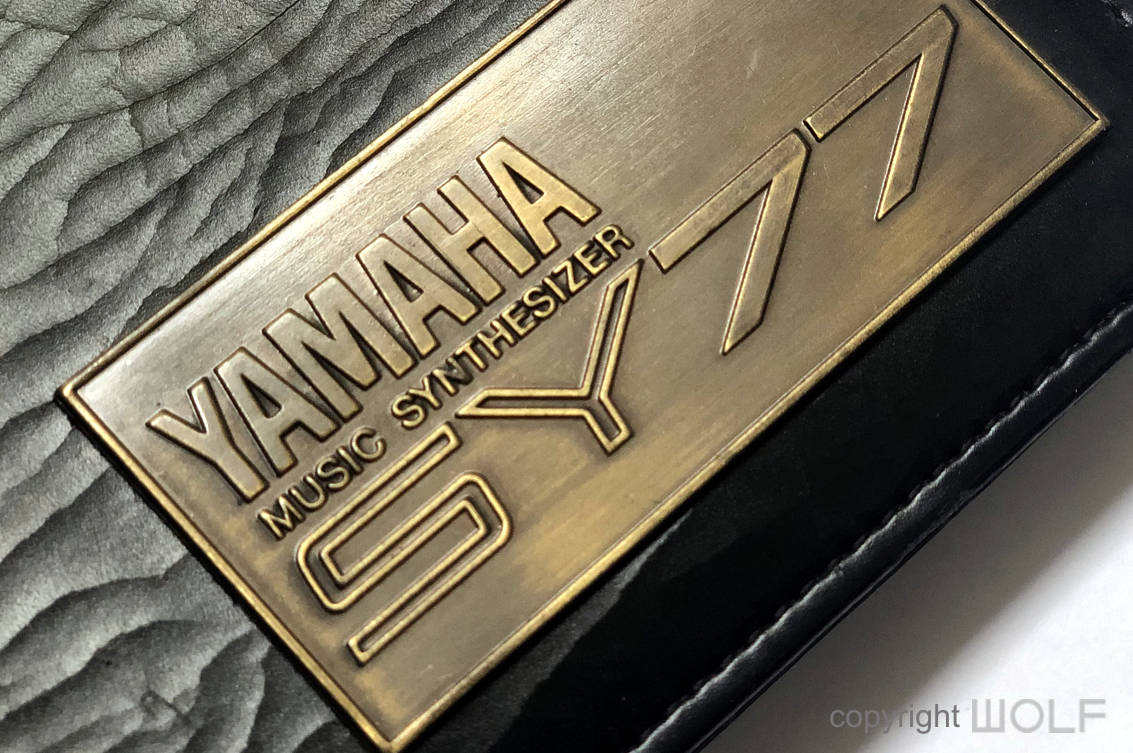
The brass plaque was a classy touch and will long outlive the black vinyl that has deteriorated significantly over the decades.
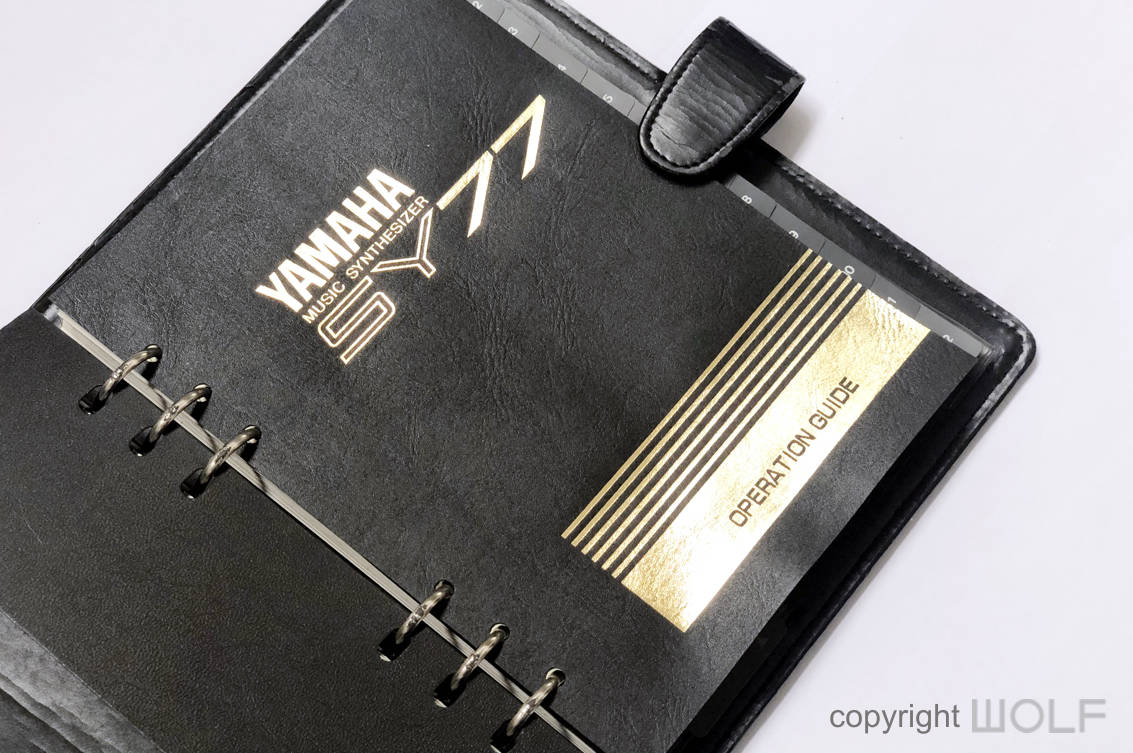 The cover page is of quality black paper with golden print- very similar to that used in Yamaha’s limited edition DX7 centennial manual (1987).
The cover page is of quality black paper with golden print- very similar to that used in Yamaha’s limited edition DX7 centennial manual (1987).
With more technical SY77 content within, we think this planner may have been intended for Yamaha sales staff.

Yamaha’s new Breath controller the BC2 coincided with the SY era.
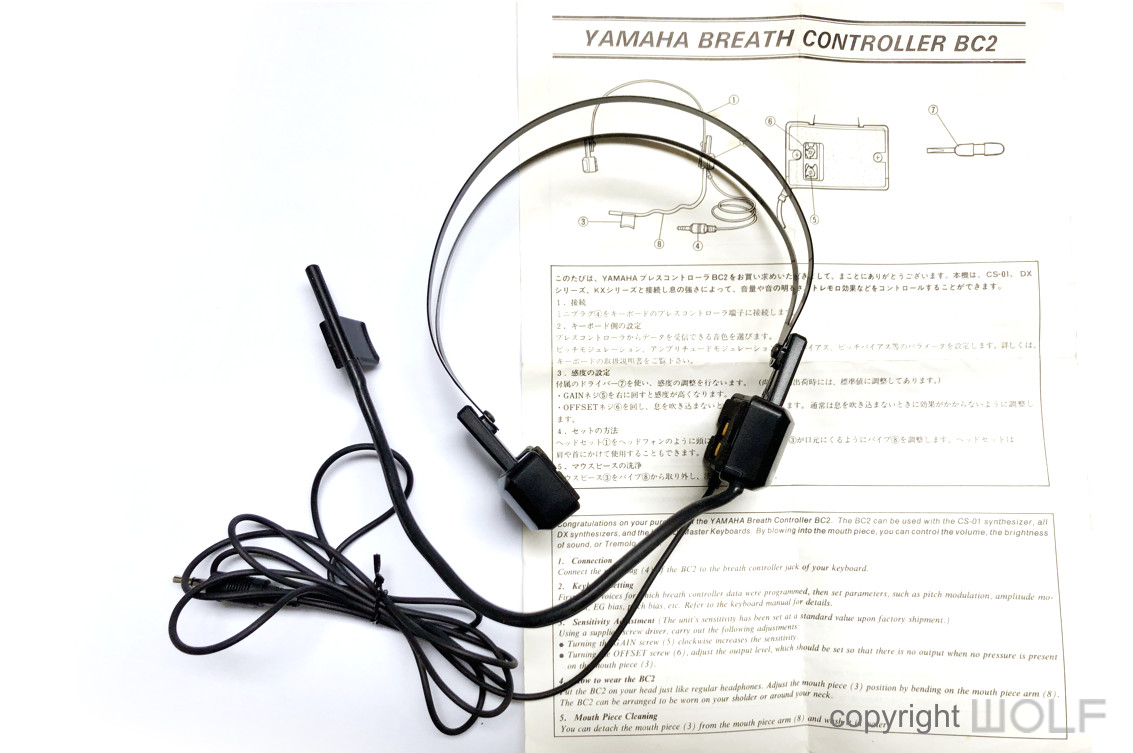
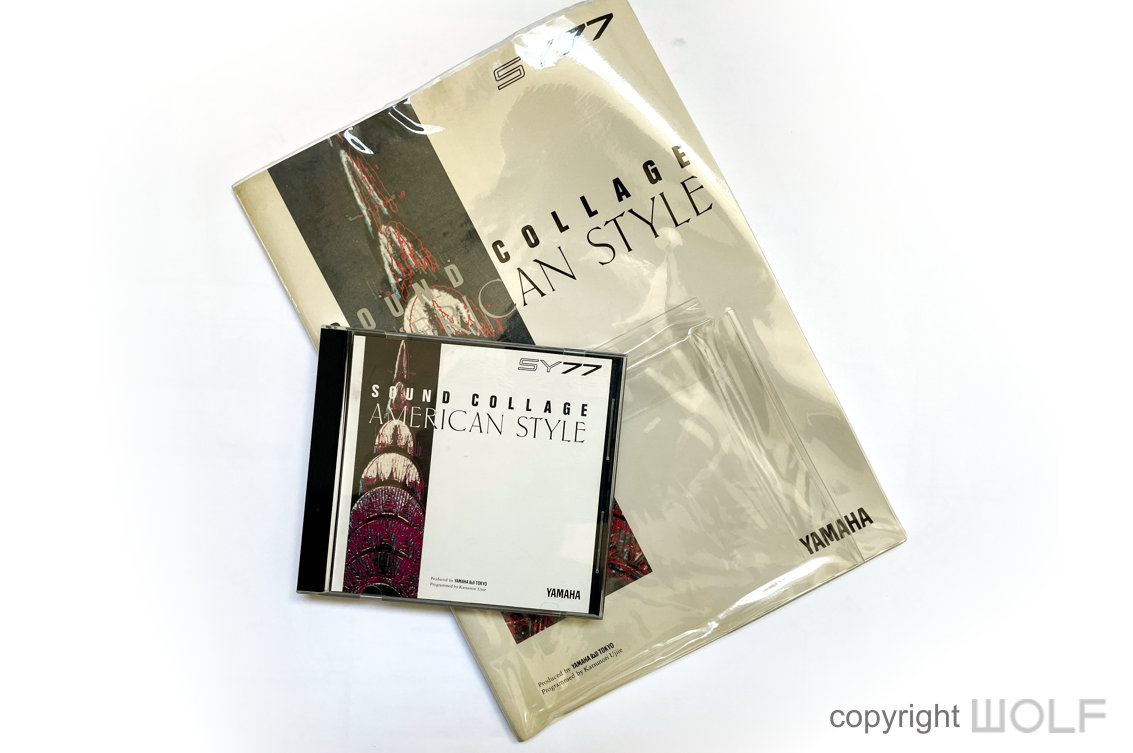
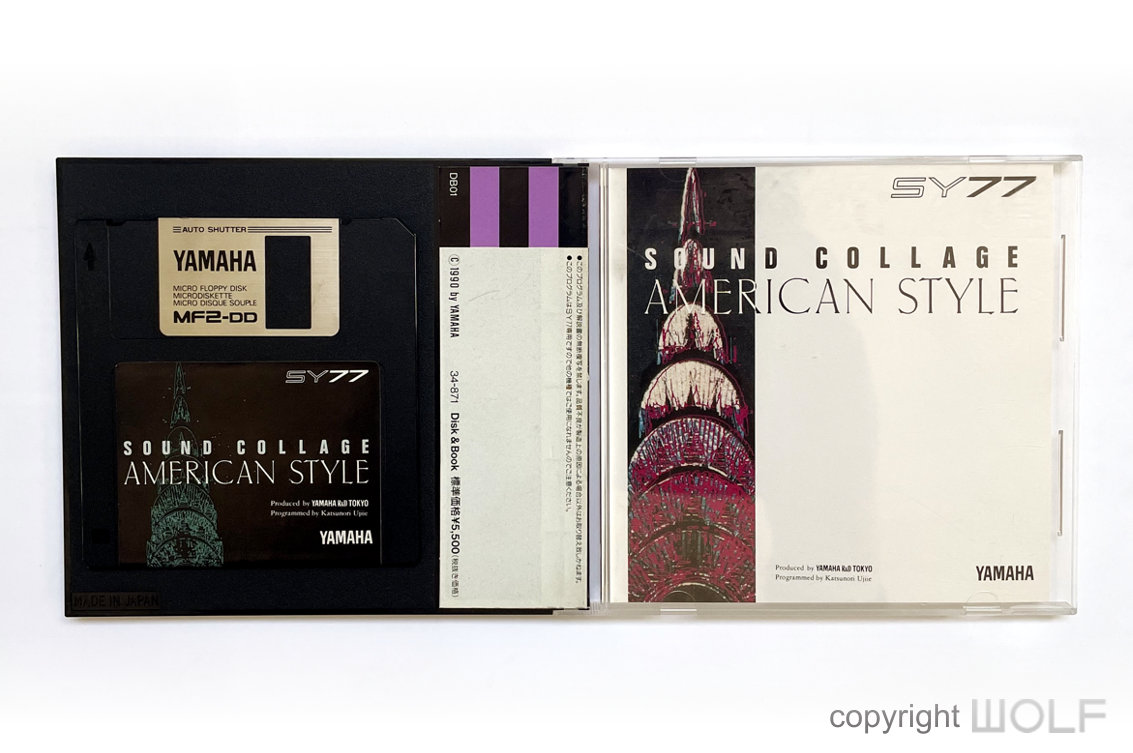
In Japan, Yamaha released some very unique material in support of their SY77 following. This Sound Collage American Style was a disk that came with a book which tried to teach the “Amercian Style”. The book came in a plastic sleeve with a compartment for the Disk.
 Left-In January 1990, issue 3 of Sound and Sound Magazine featured the SY77. Right-Japanese Keyboard Magazine made an exclusive user guide book for the SY77
Left-In January 1990, issue 3 of Sound and Sound Magazine featured the SY77. Right-Japanese Keyboard Magazine made an exclusive user guide book for the SY77

This rare metal pin is possibly the only design made for the SY77.
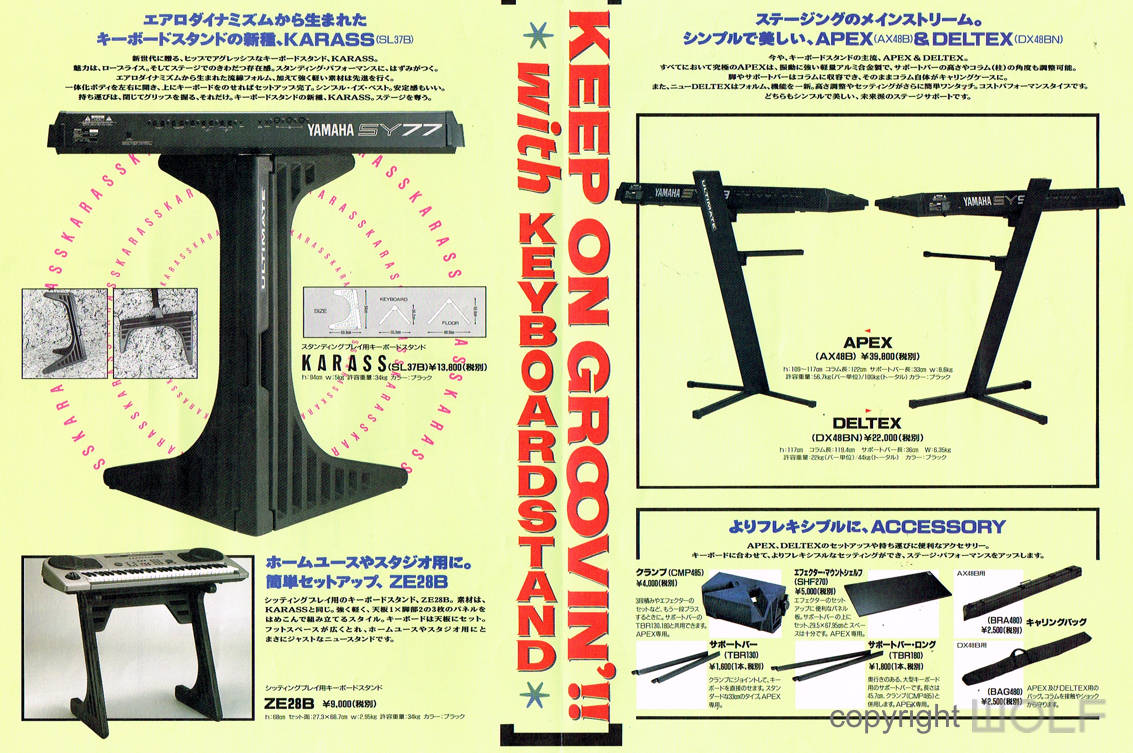
The SY77 was the model used in Ultimate Keyboard stands Japanese brochure.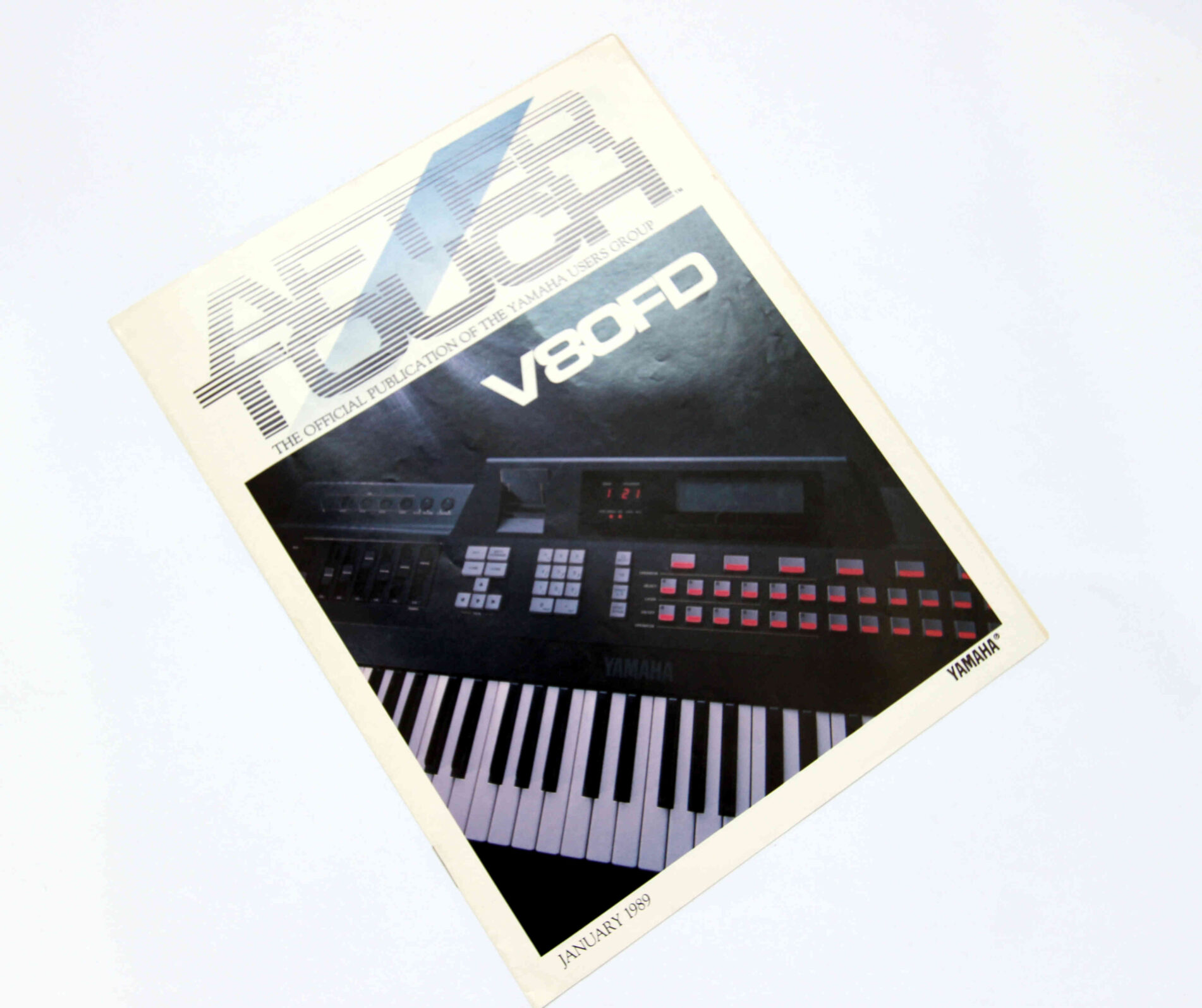 The mysterious V-80FD that never happened. Anyone know where we can find this original prototype and maybe buy it?
The mysterious V-80FD that never happened. Anyone know where we can find this original prototype and maybe buy it?
WOLF DESIGN EXCELLENCE SCORE = 6.5
Disclaimer
The information in this review is intended for informational or educational purposes to provide readers an understanding of how something may be seen from a certain design perspective. In this case it is from the view point of WOLF DESIGNS. As design is subjective this review should only be considered as an independent opinion. Information further to being of an opinion is provided to the best of our knowledge based on our own research at the time of doing the review. We cannot be held responsible for any inaccuracies or inconsistencies and reserve the right to change or update any content as appropriate.
The final responsibility of the design resides with the original manufacturer.
